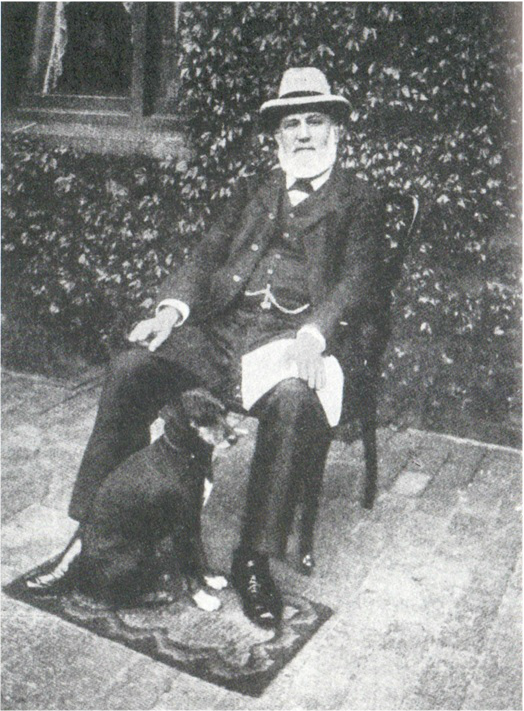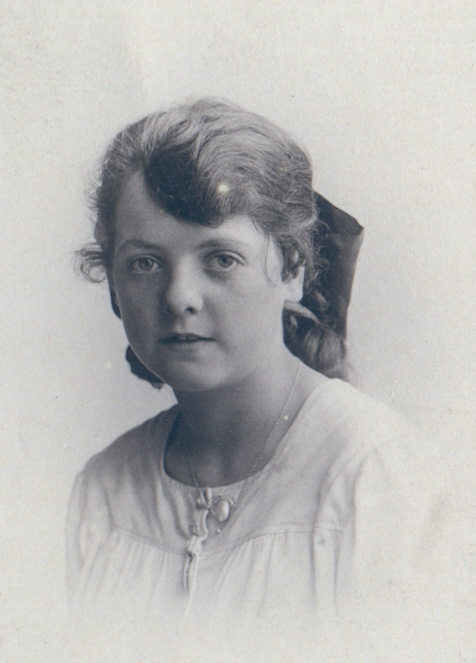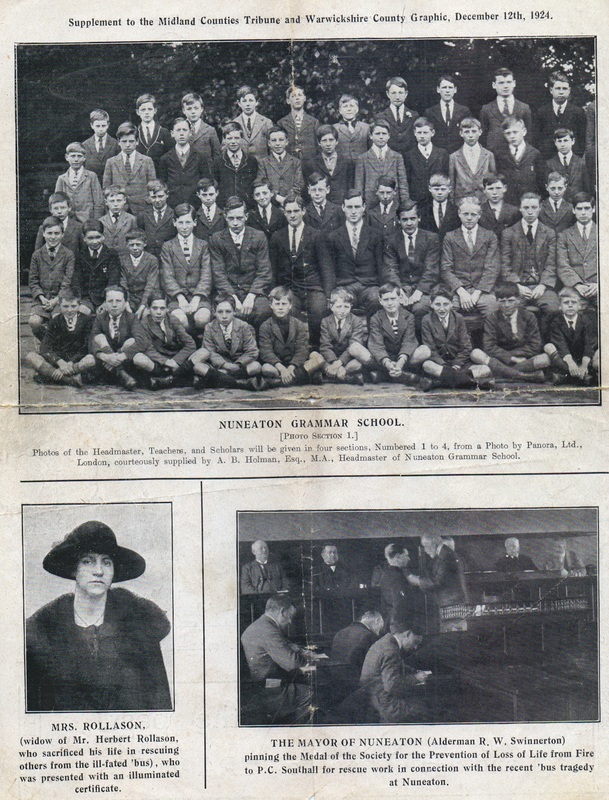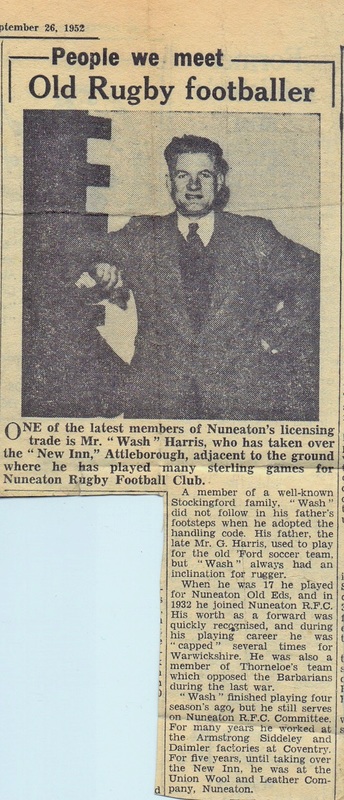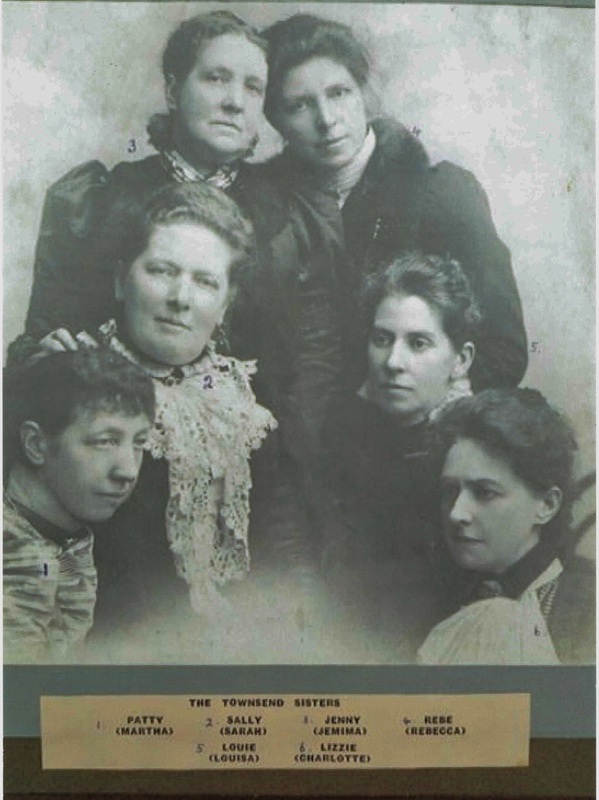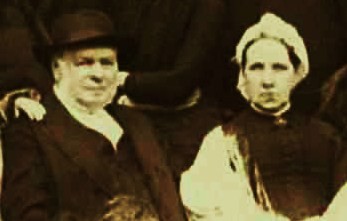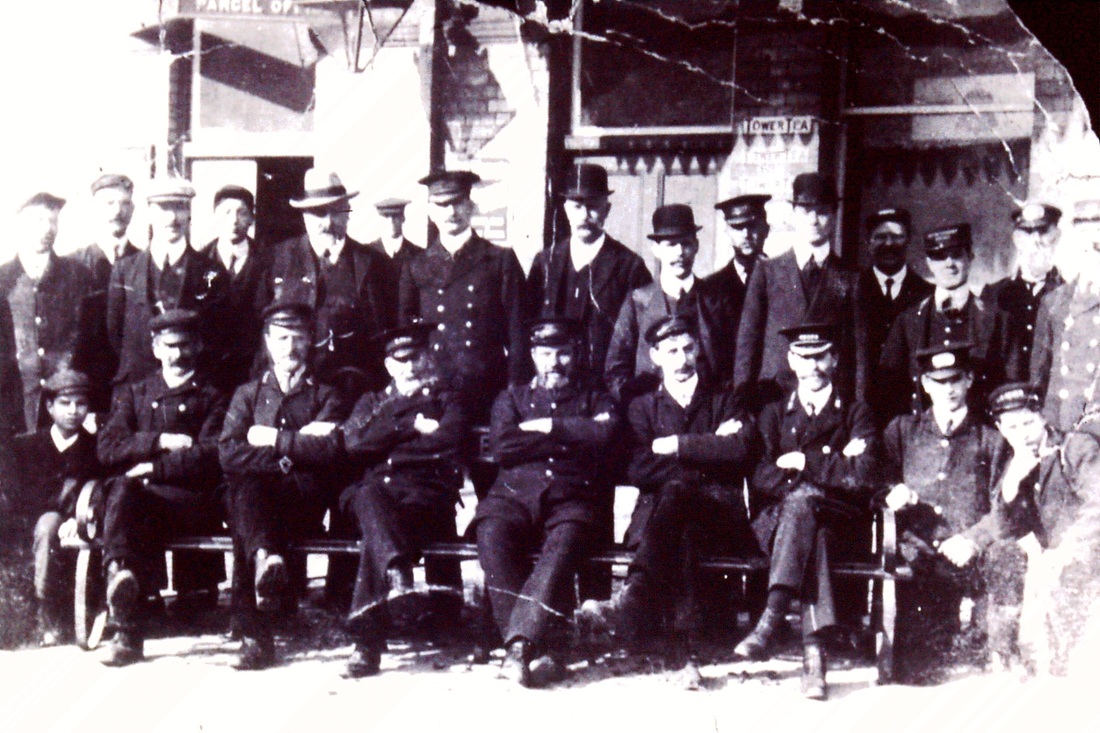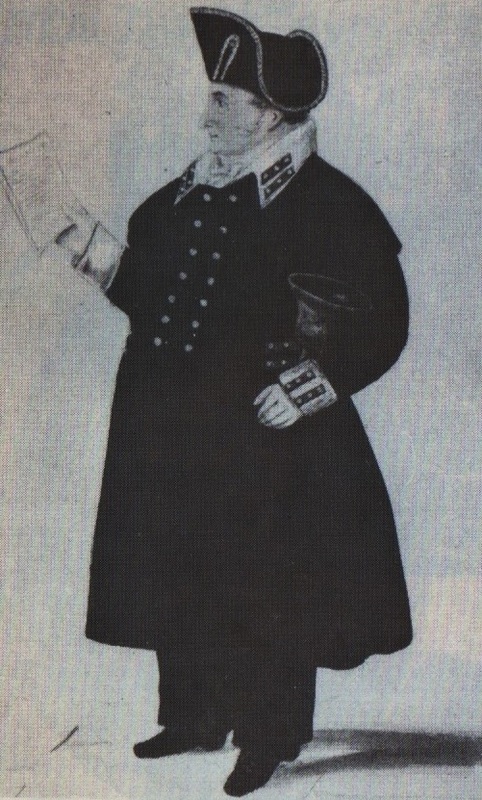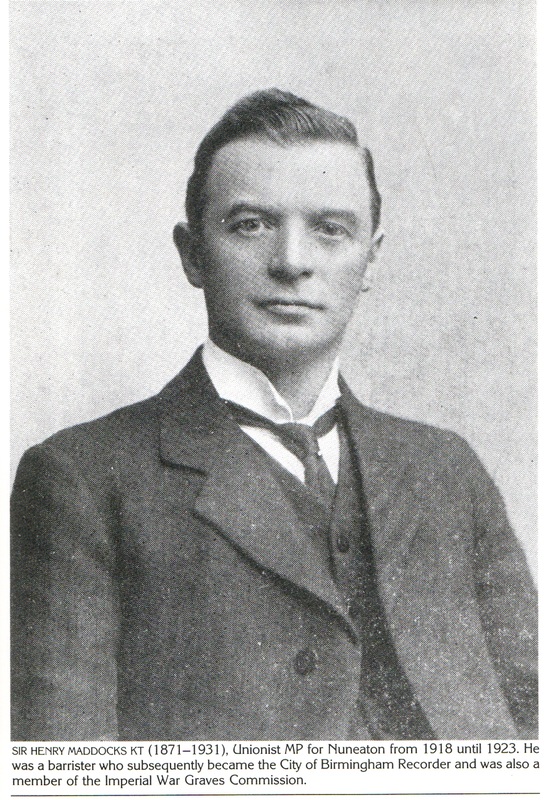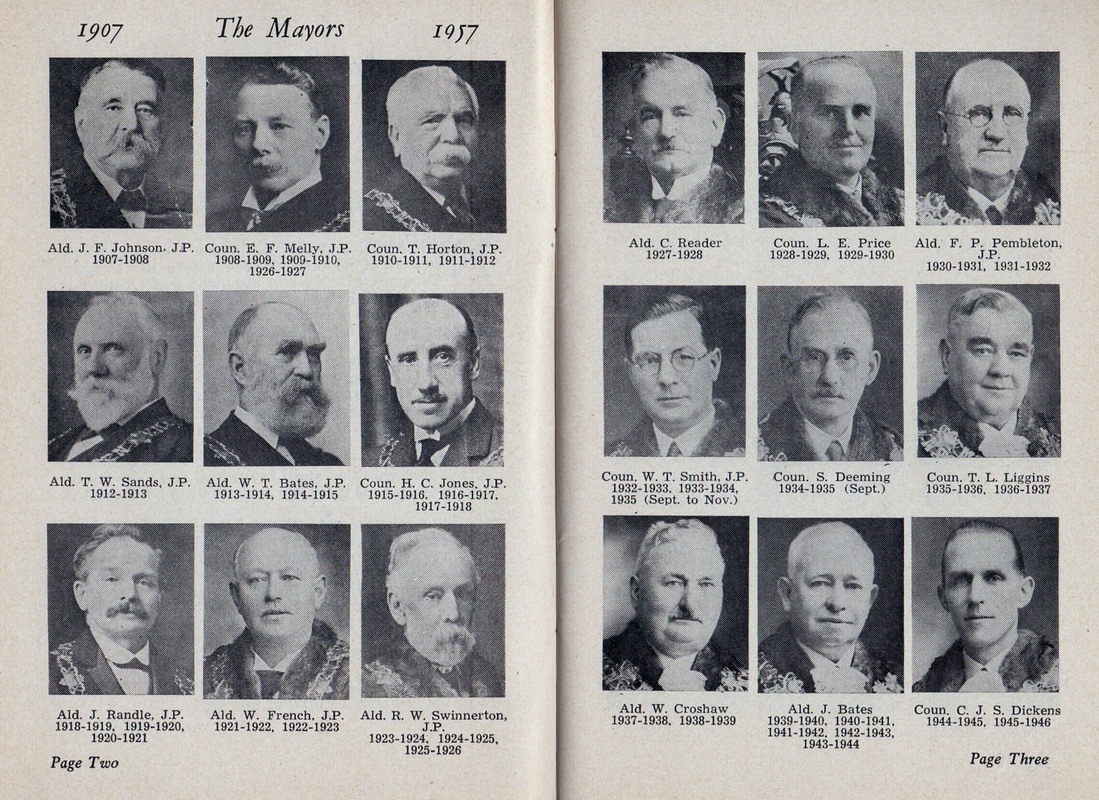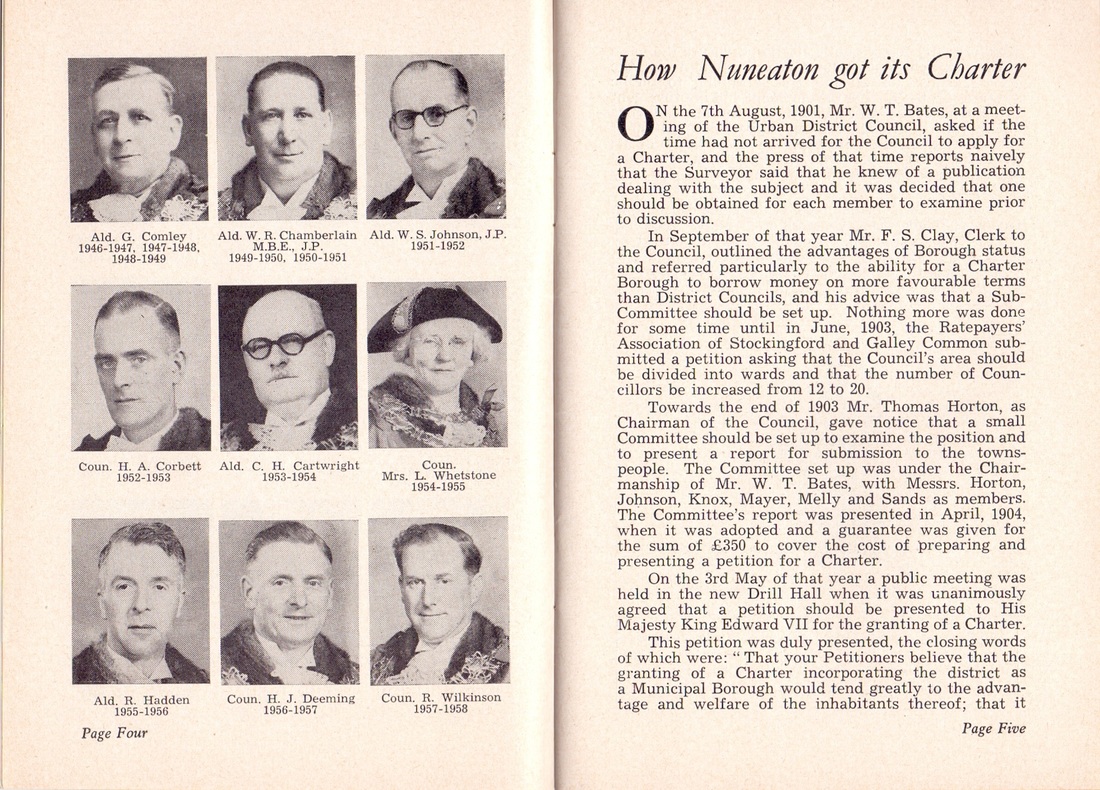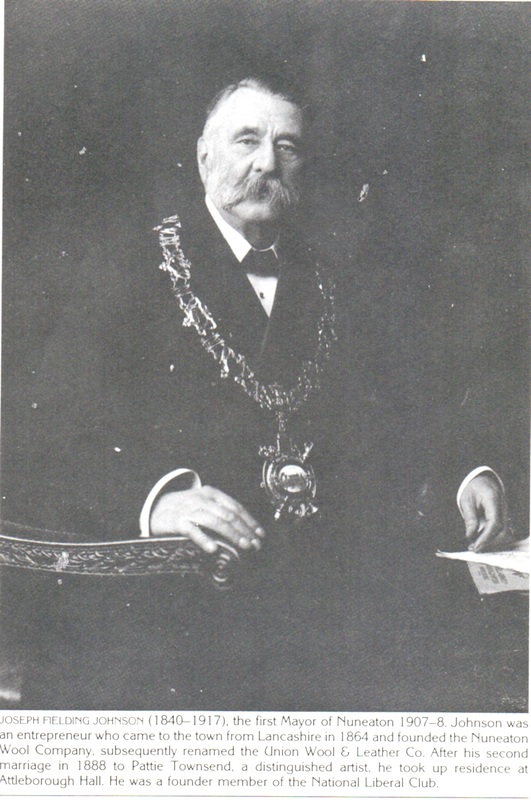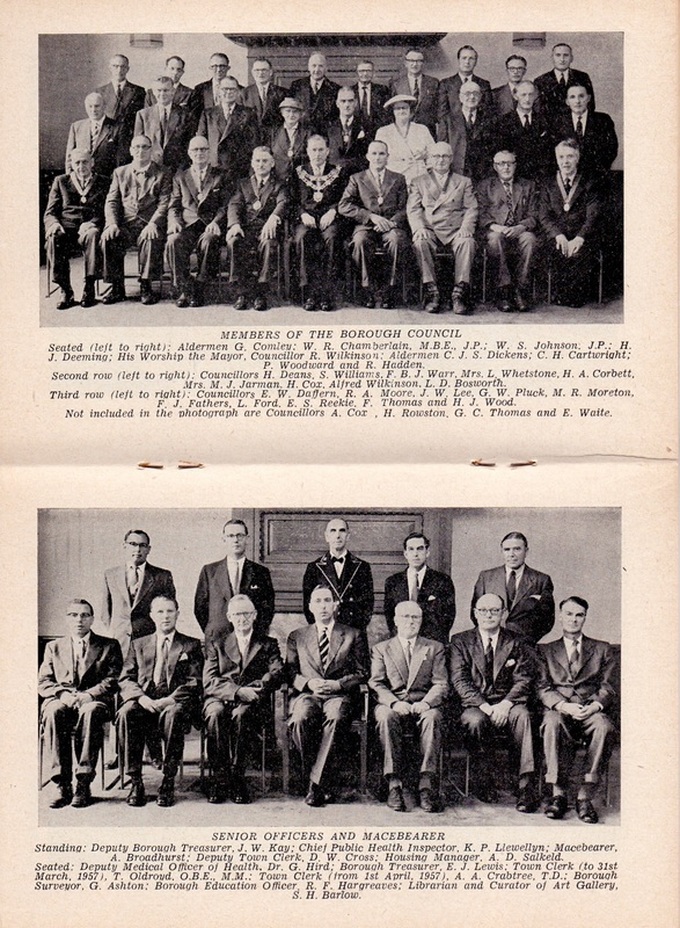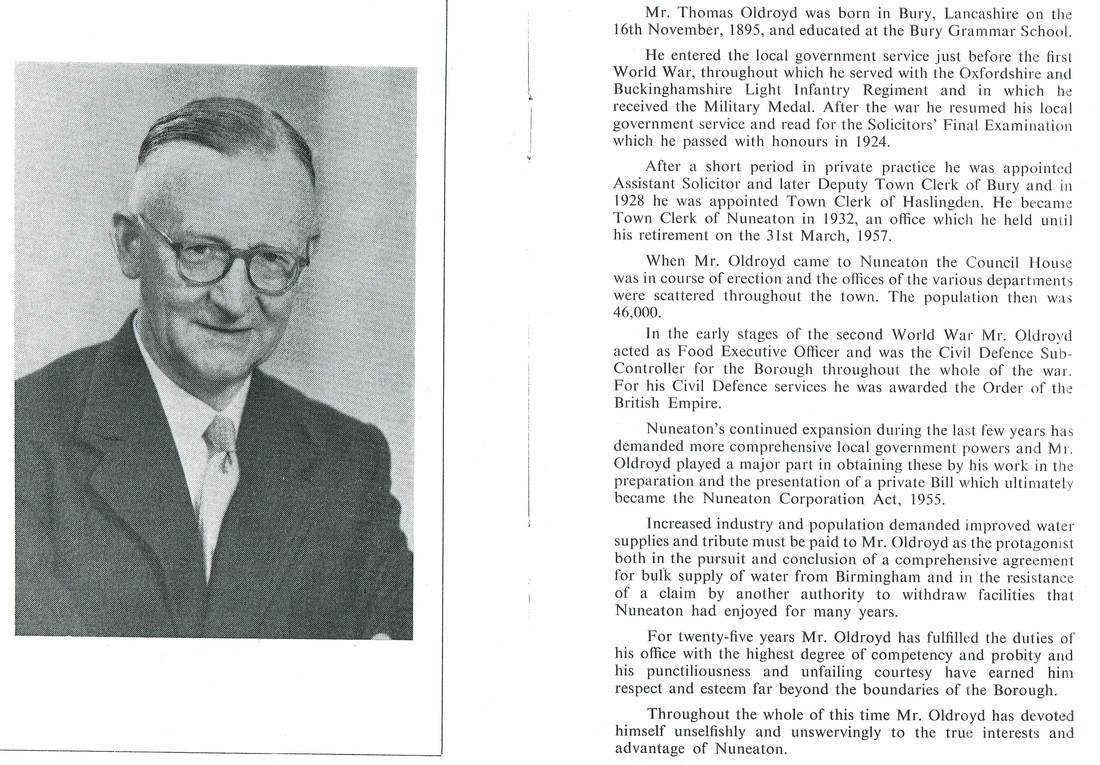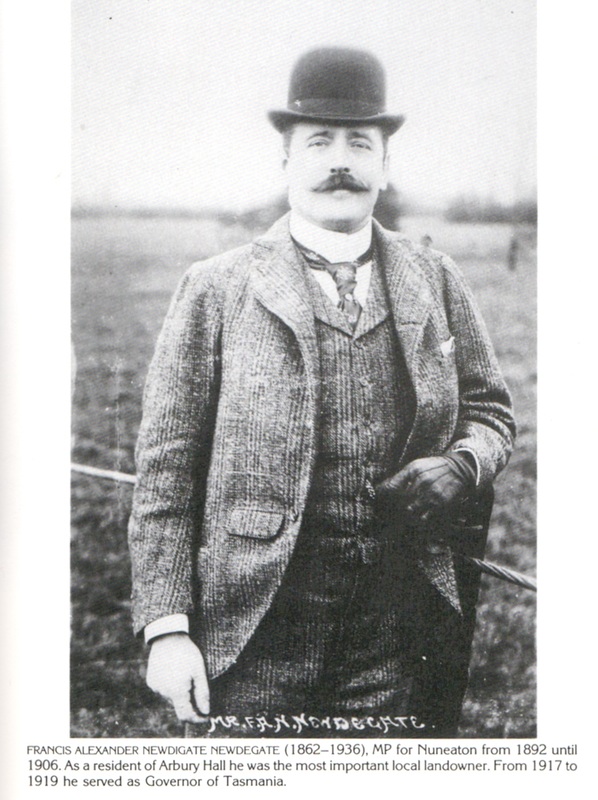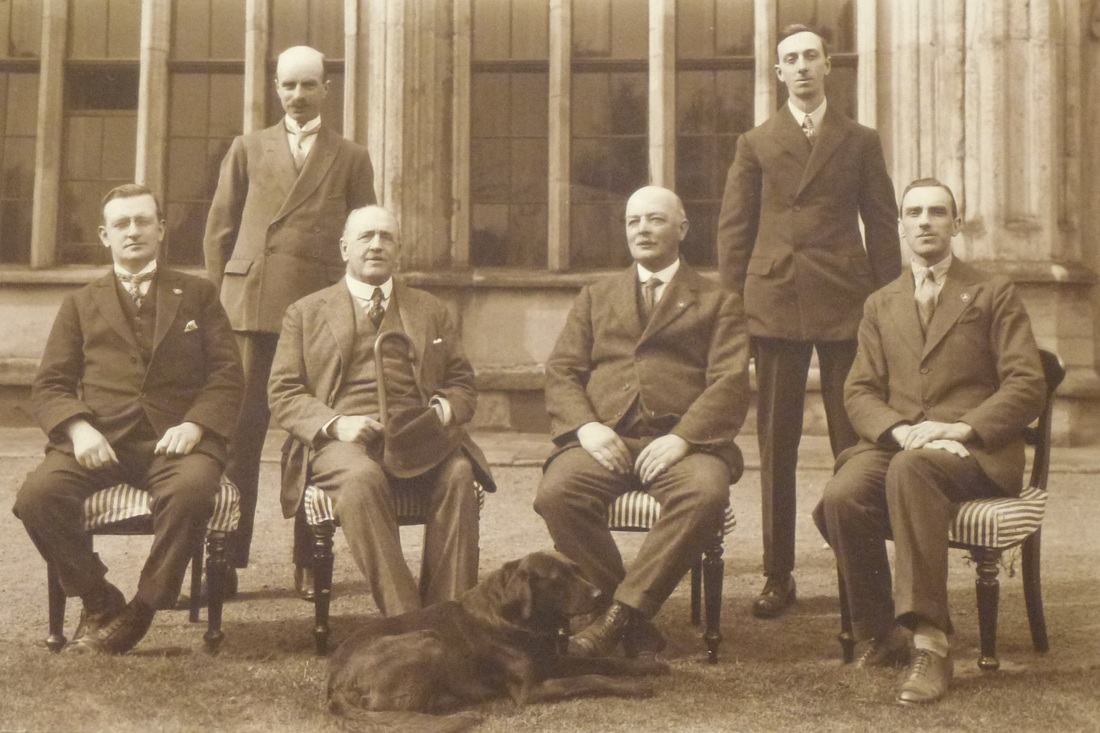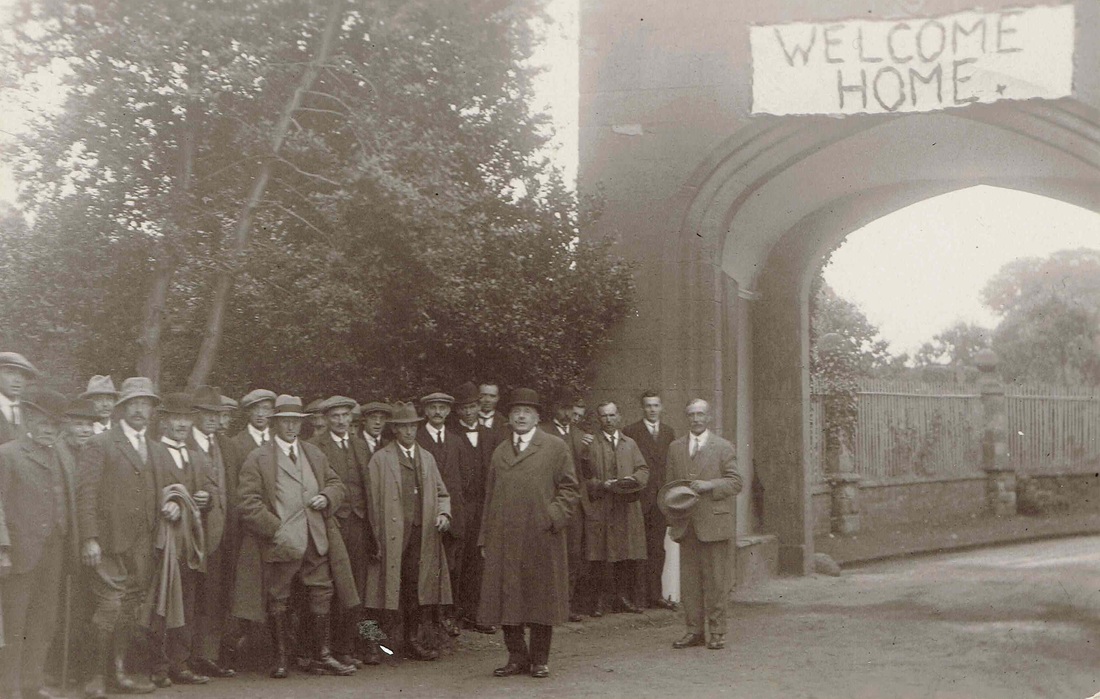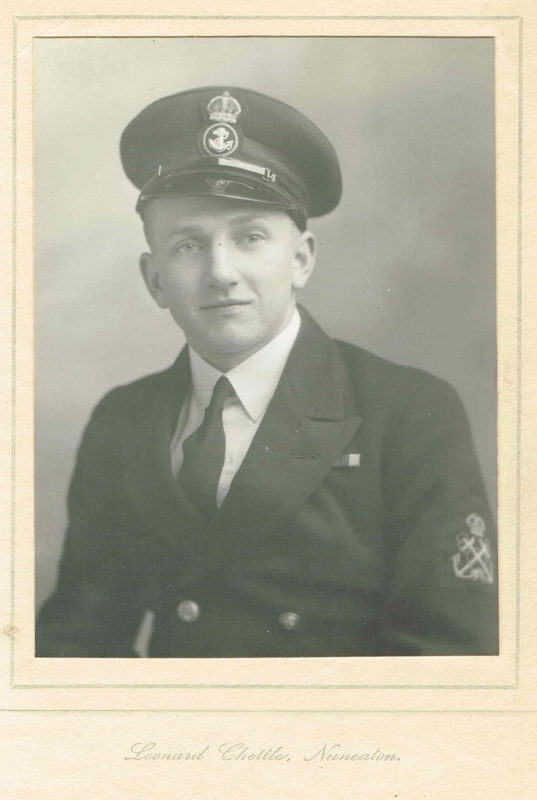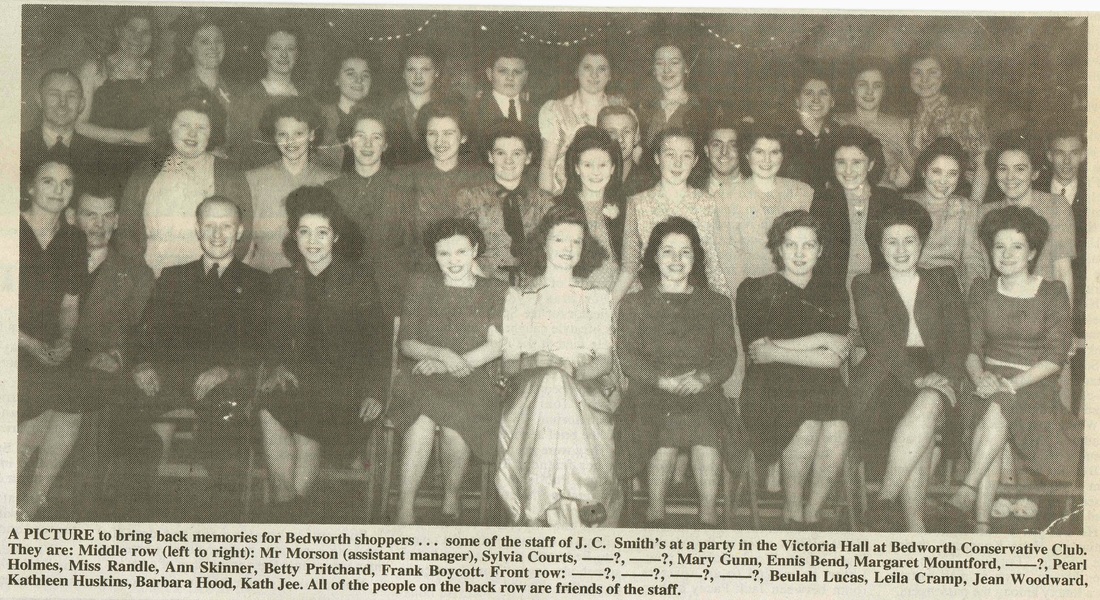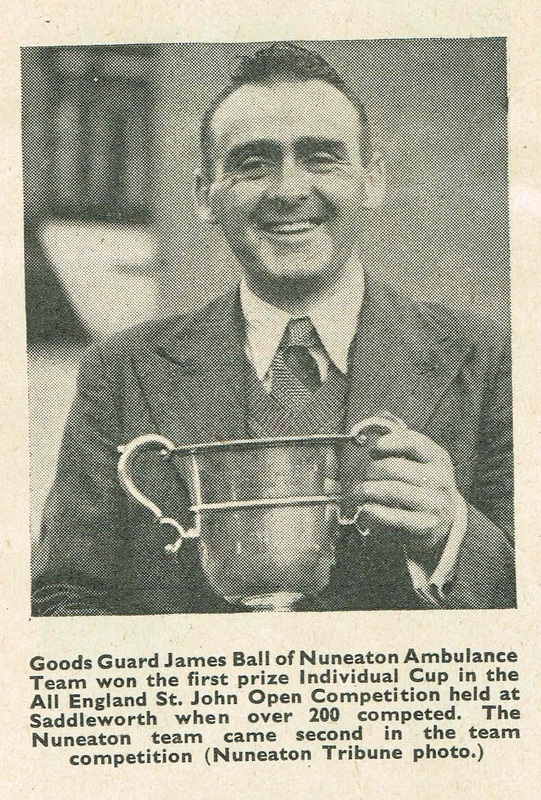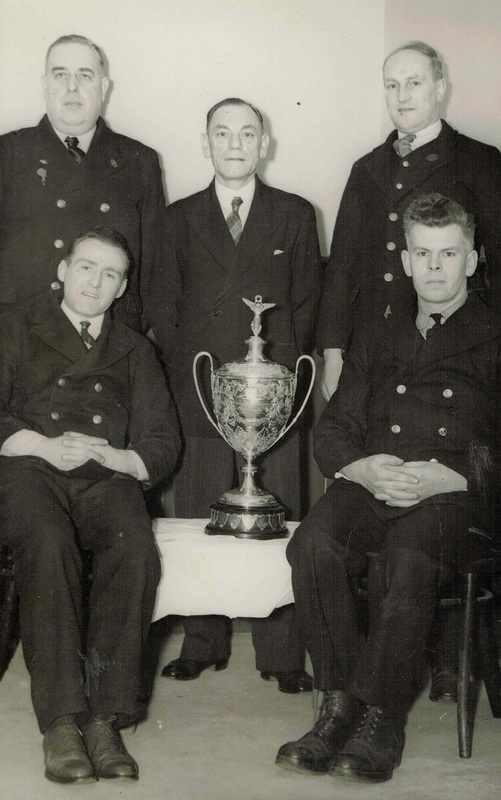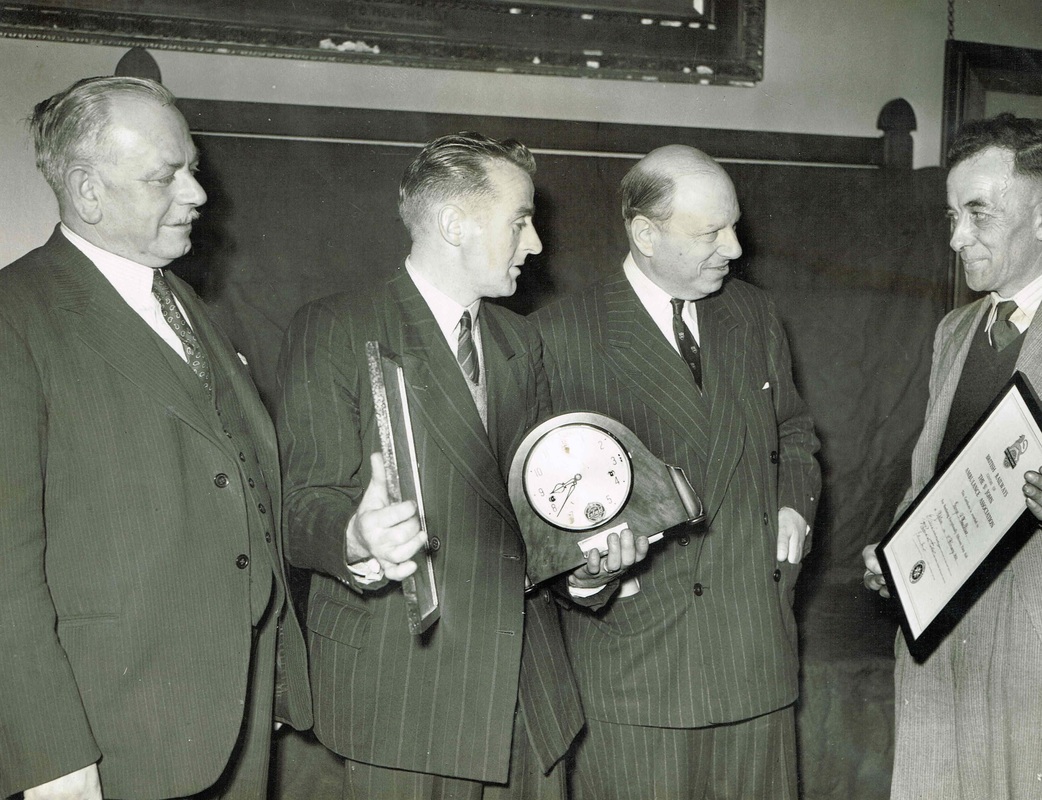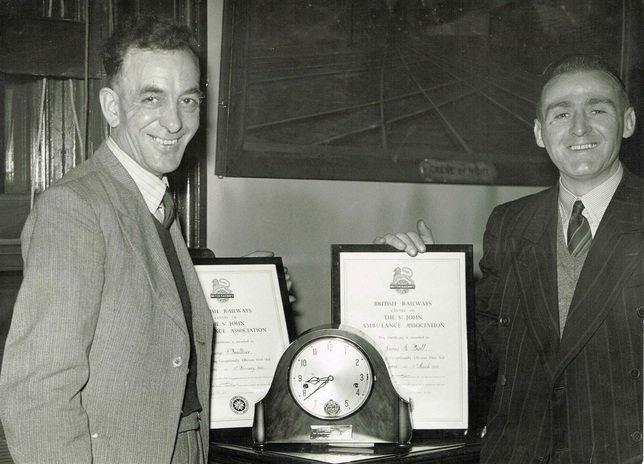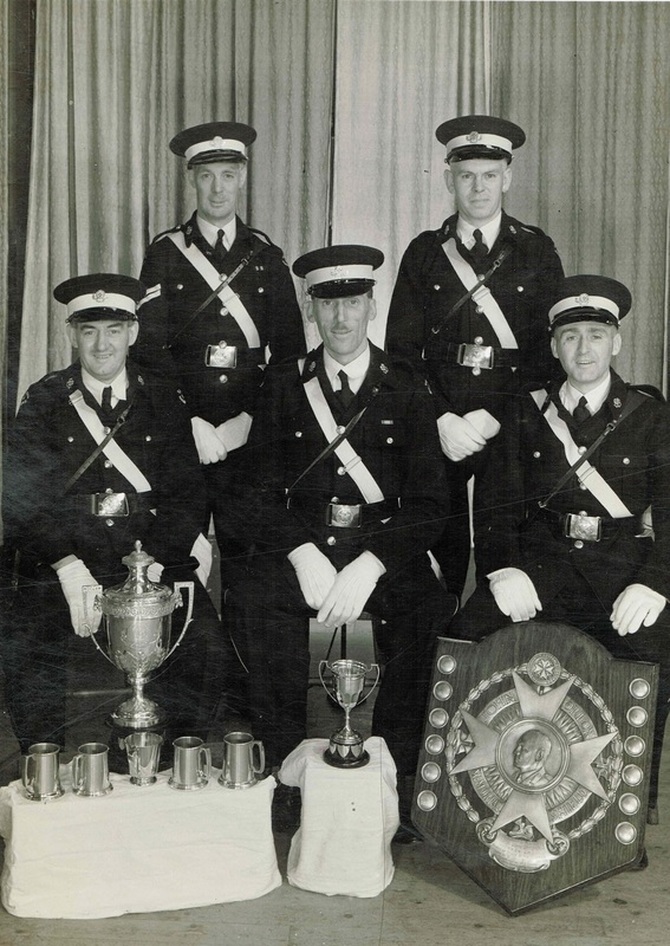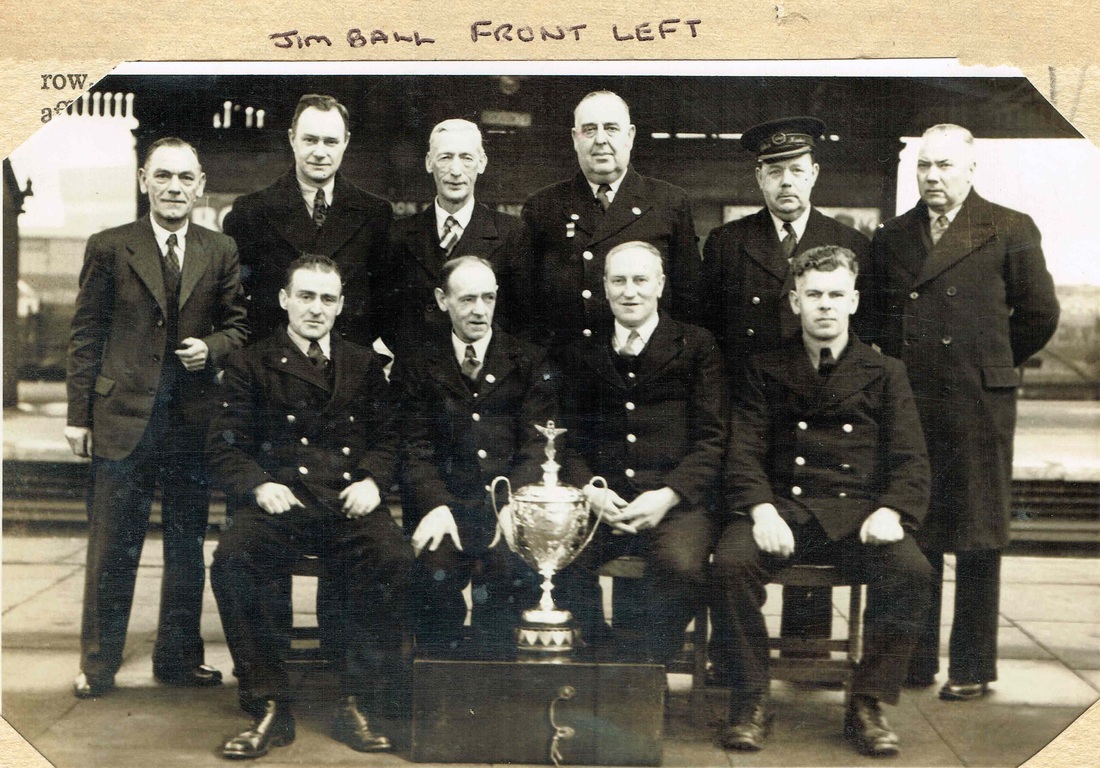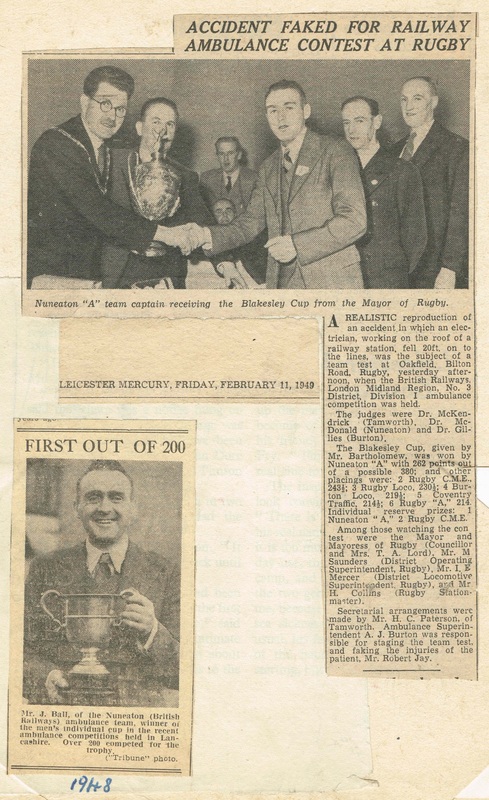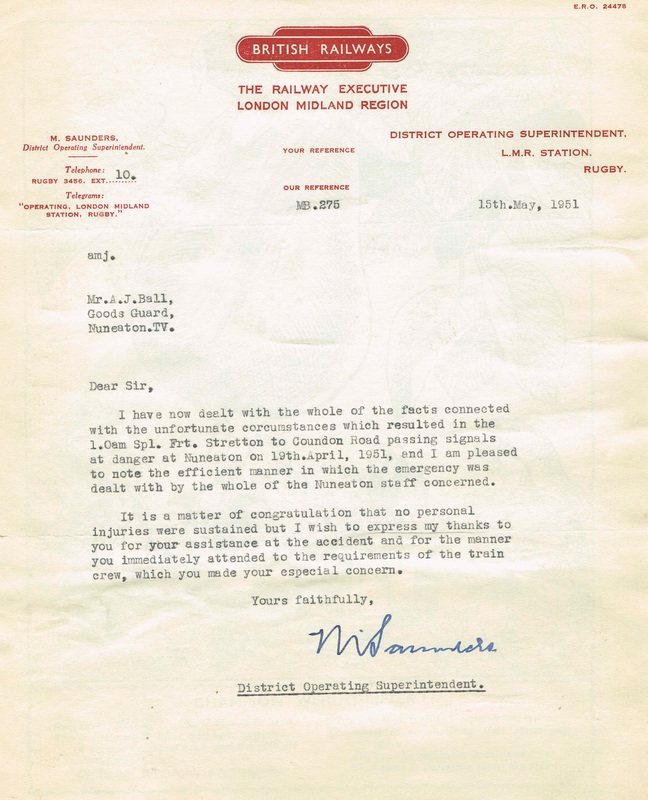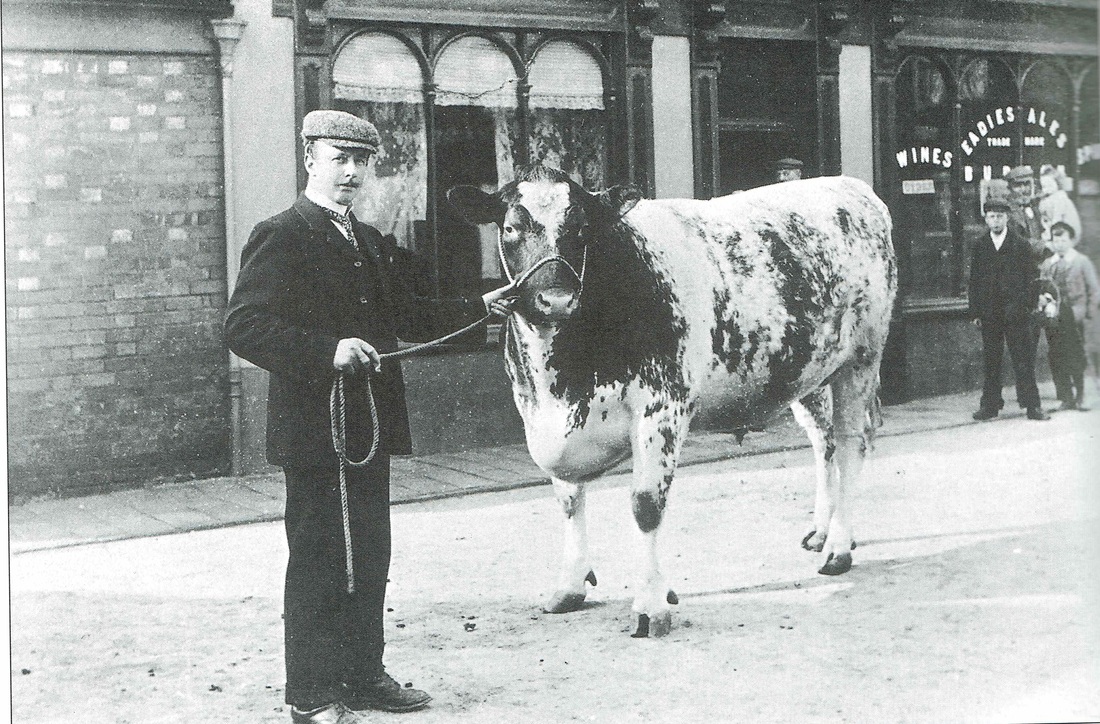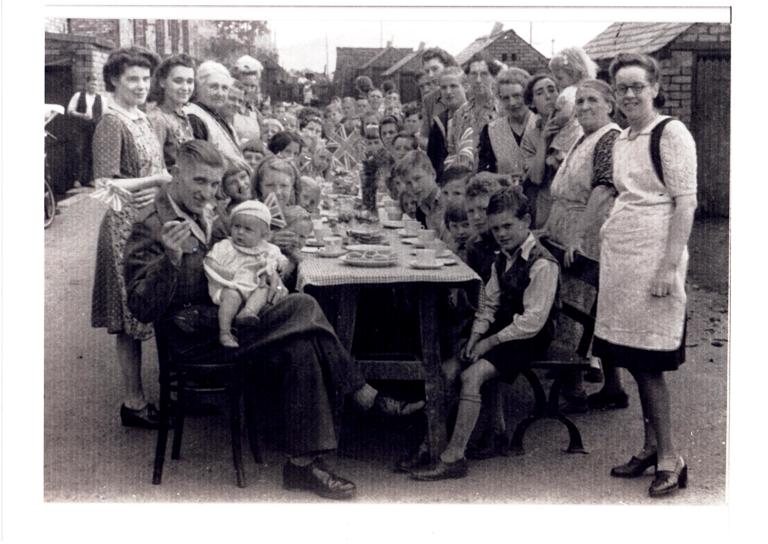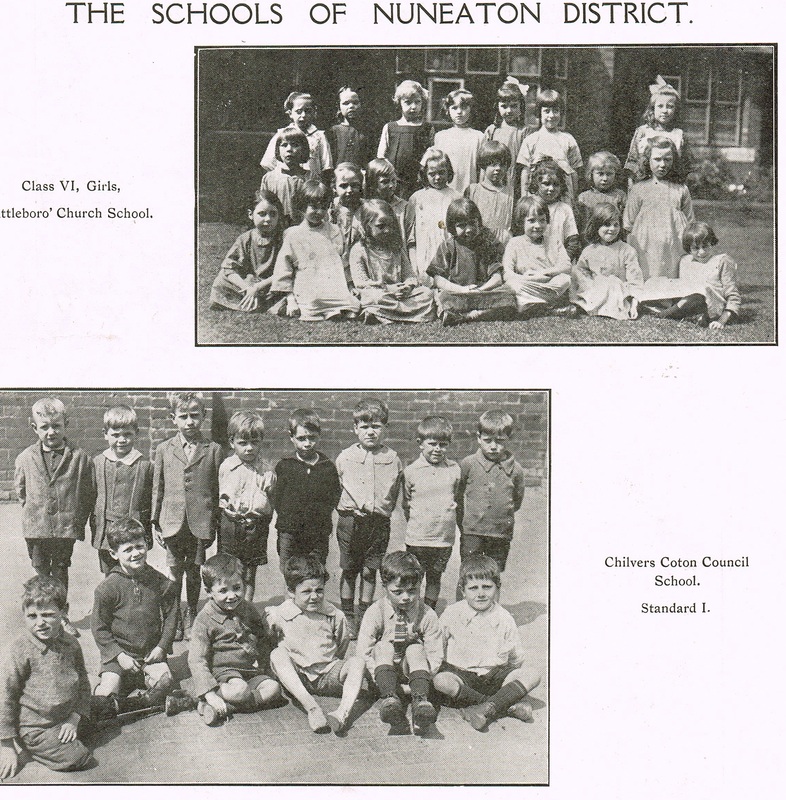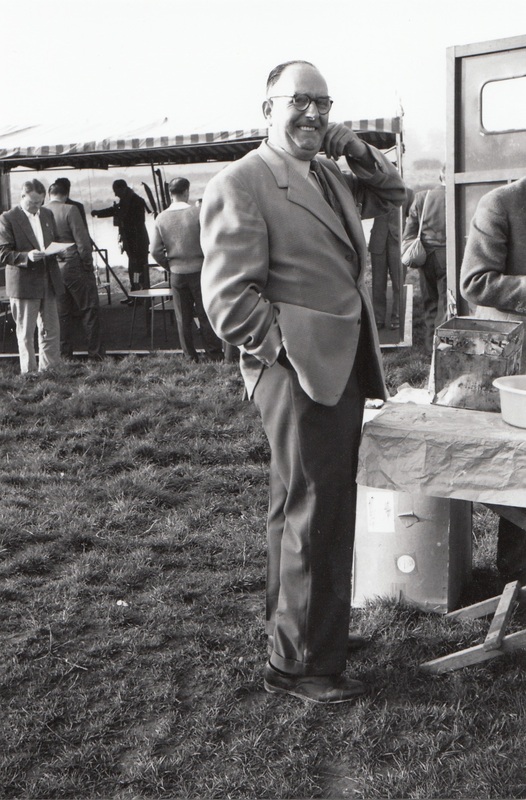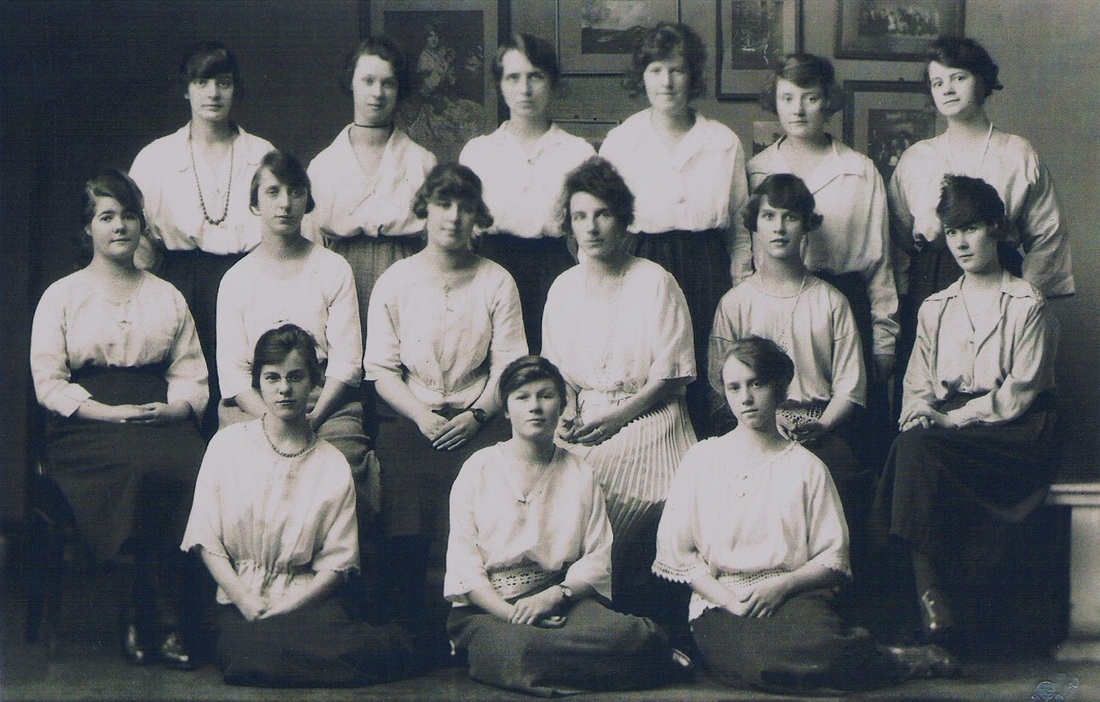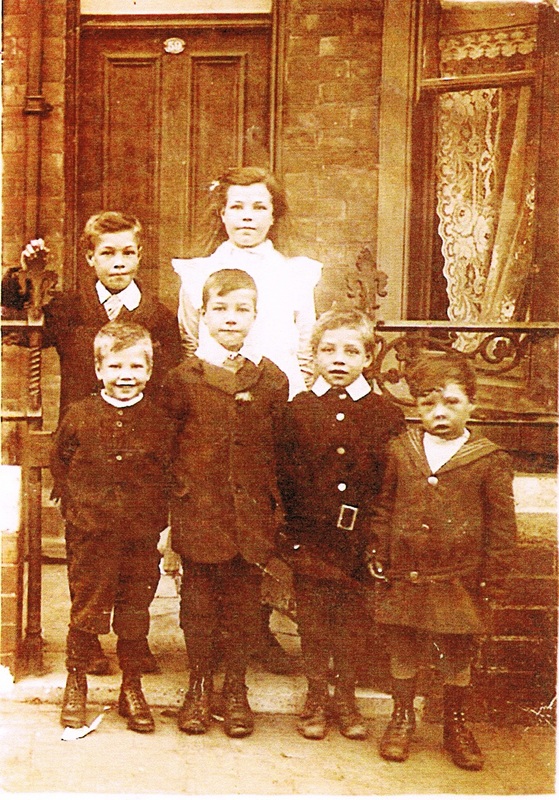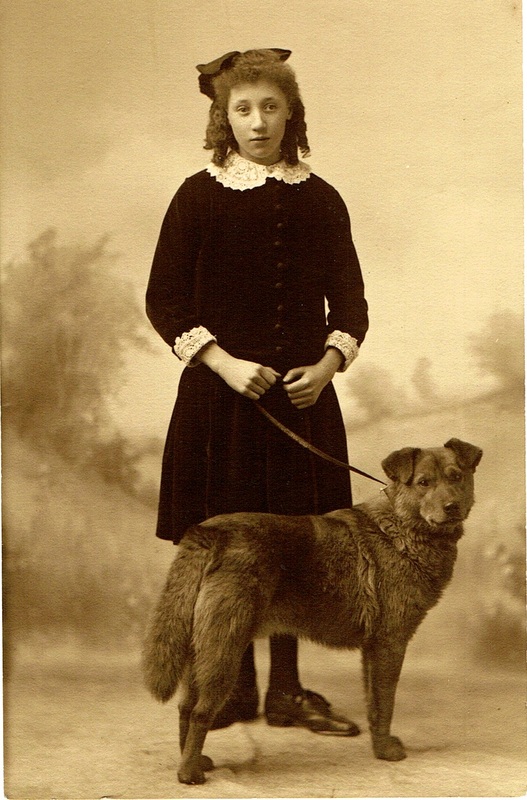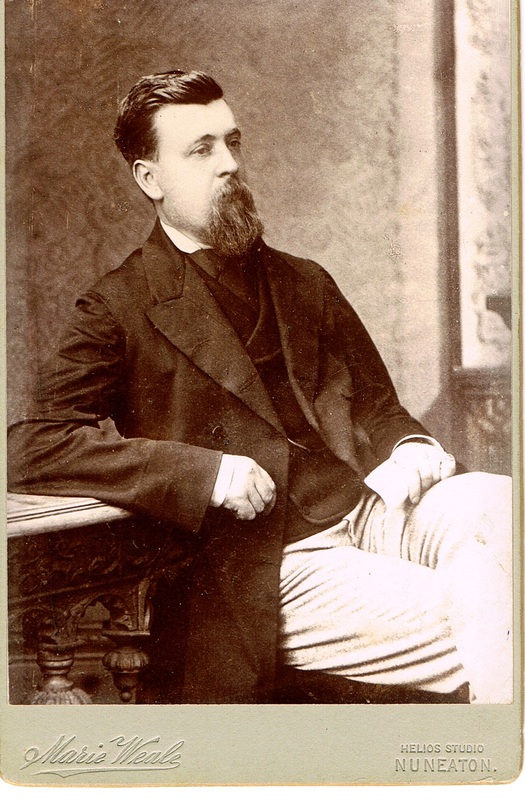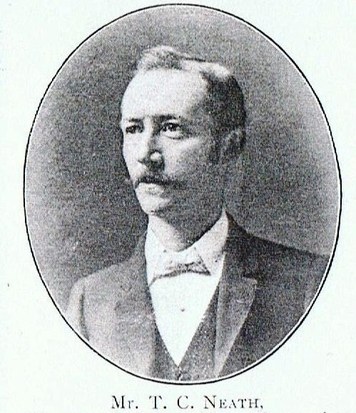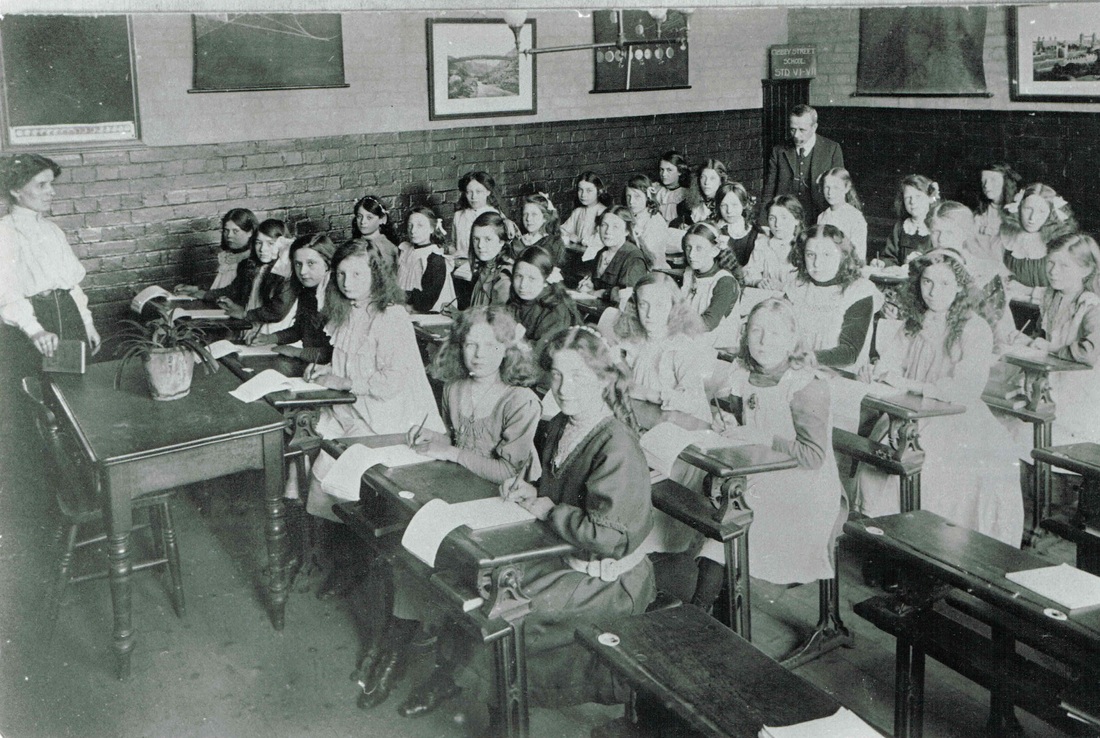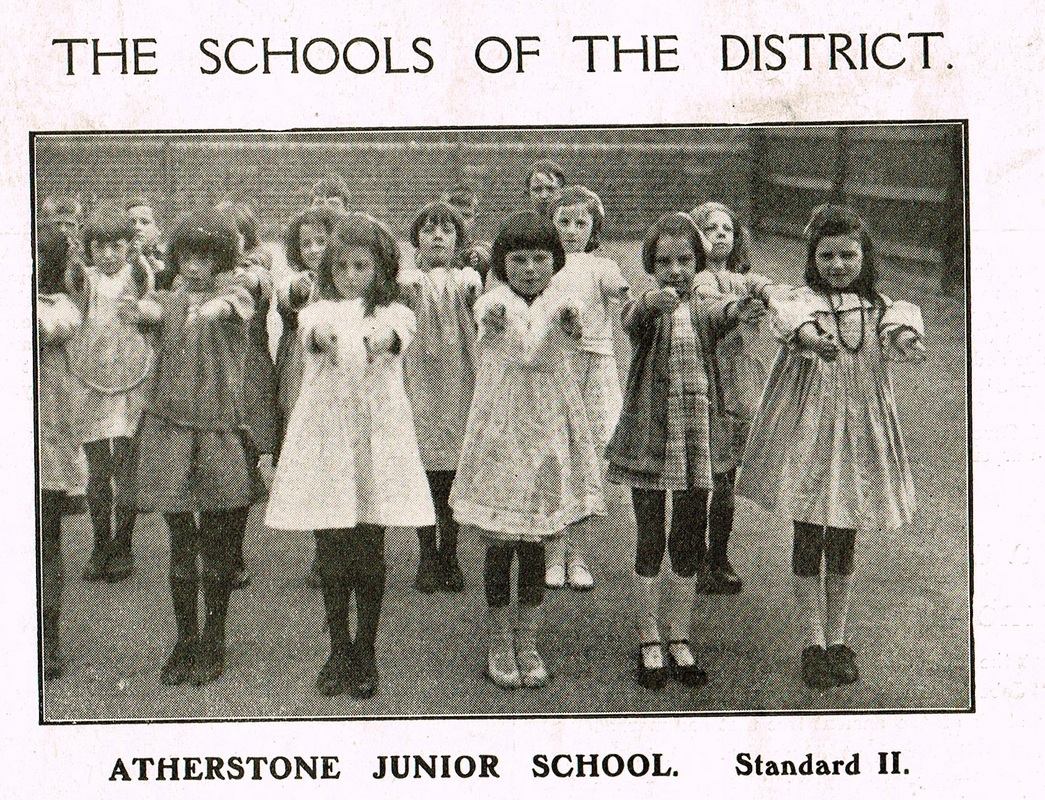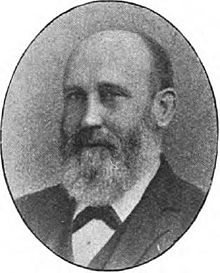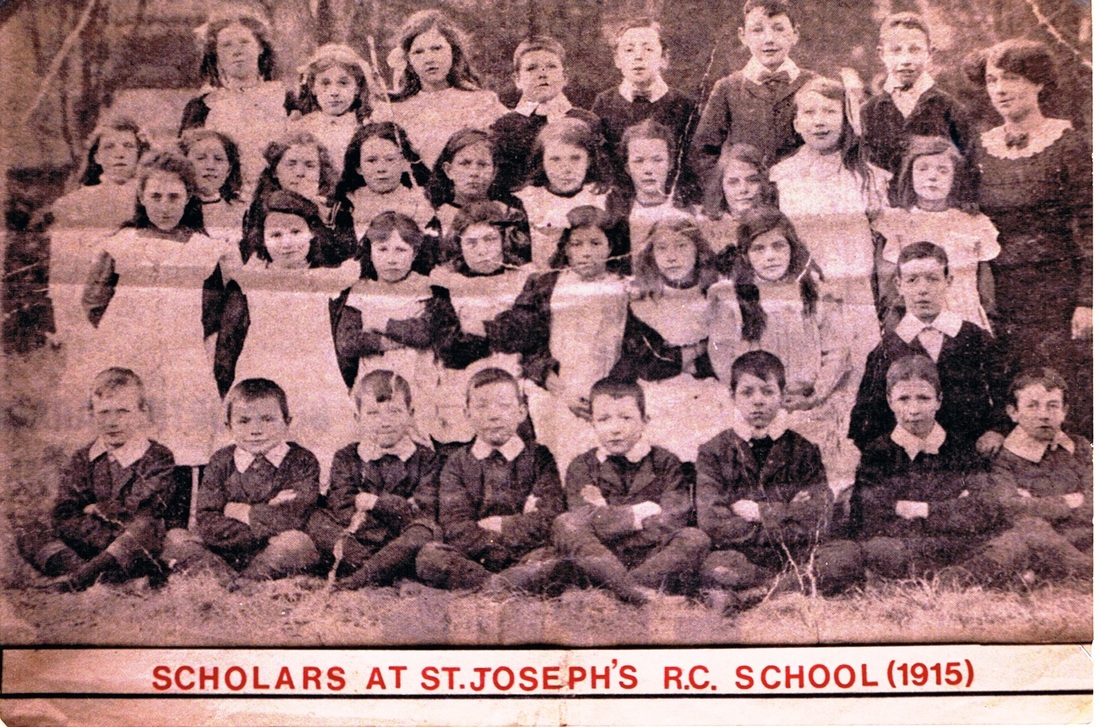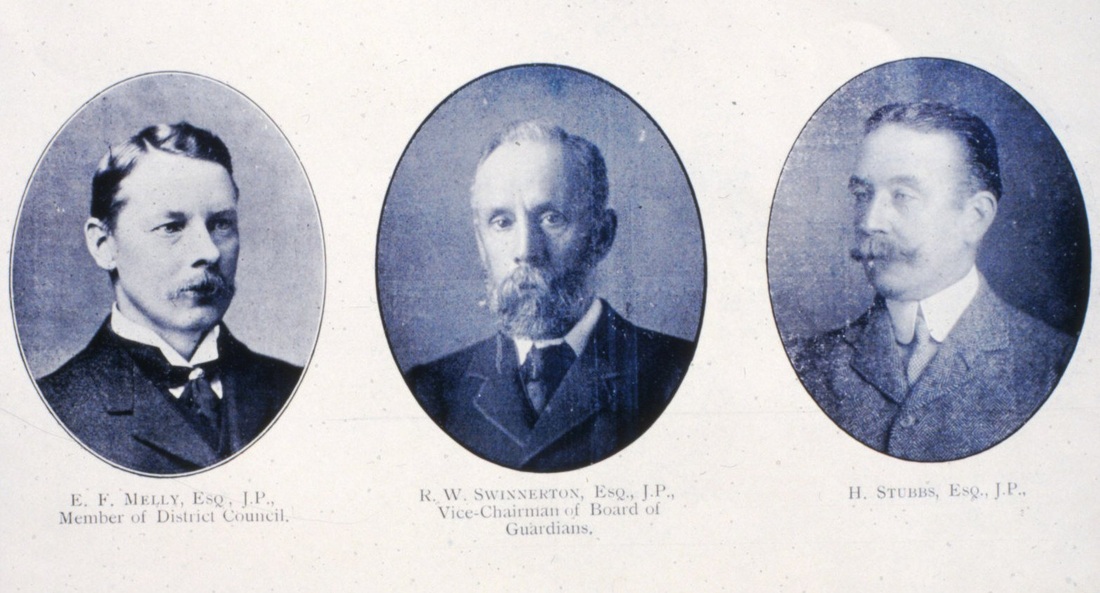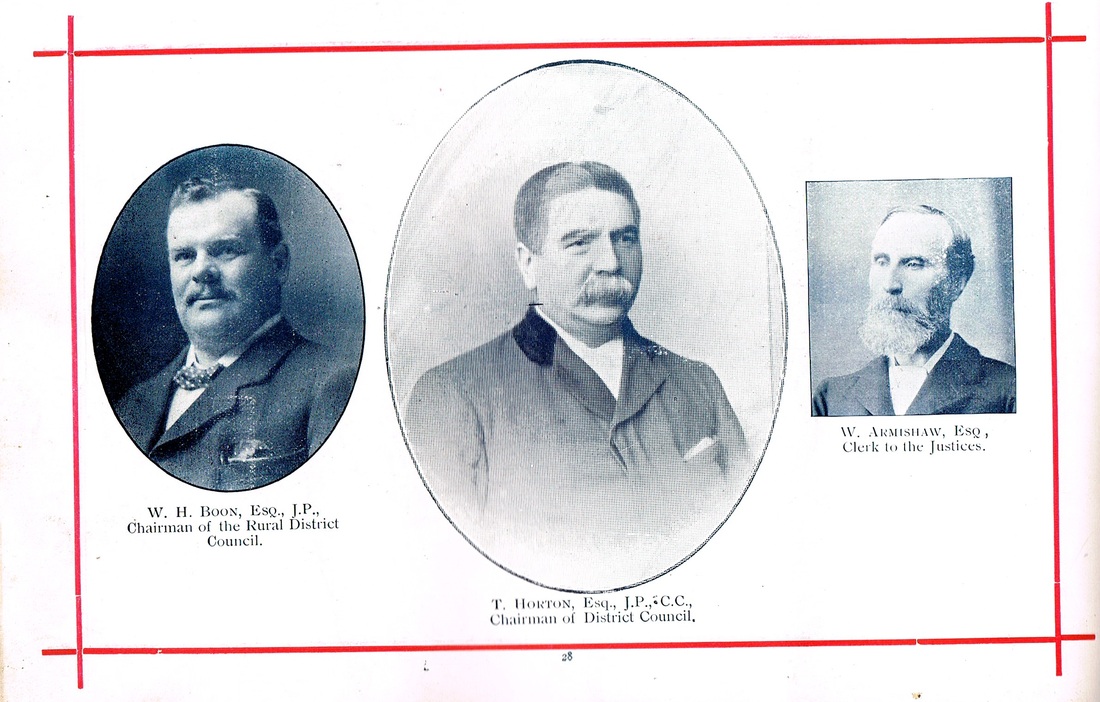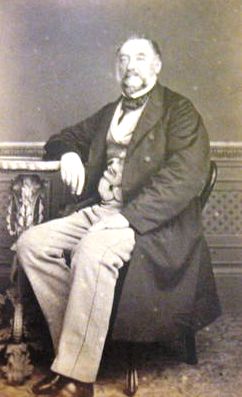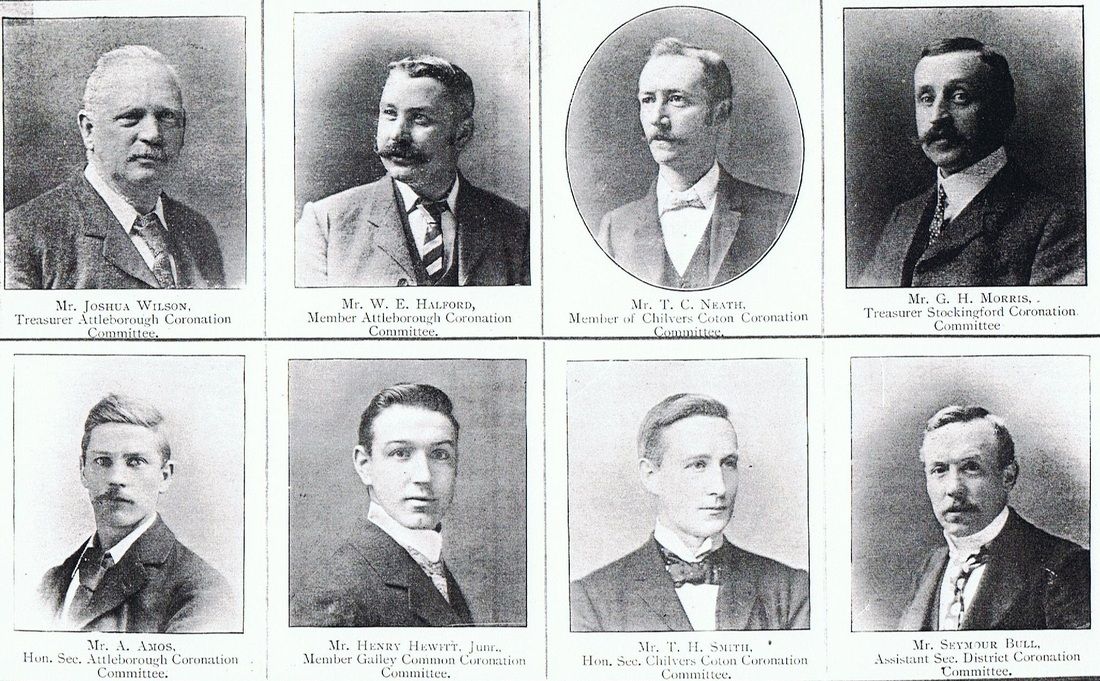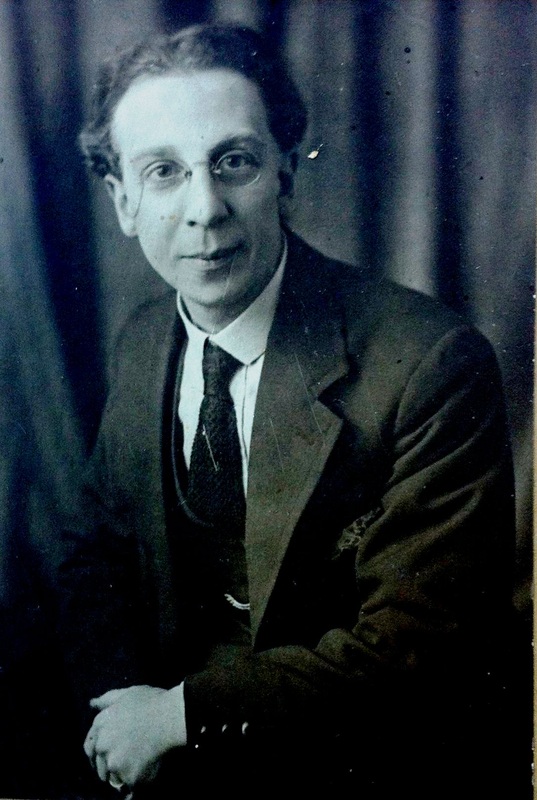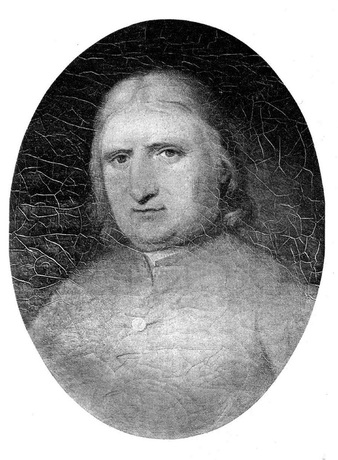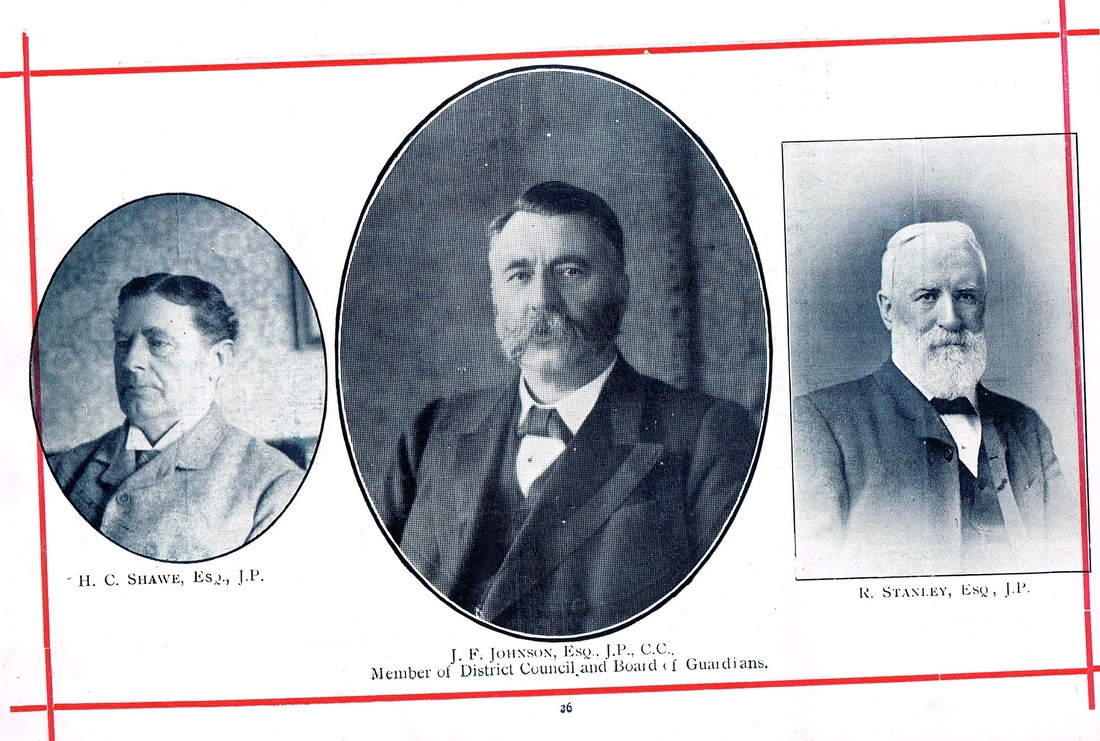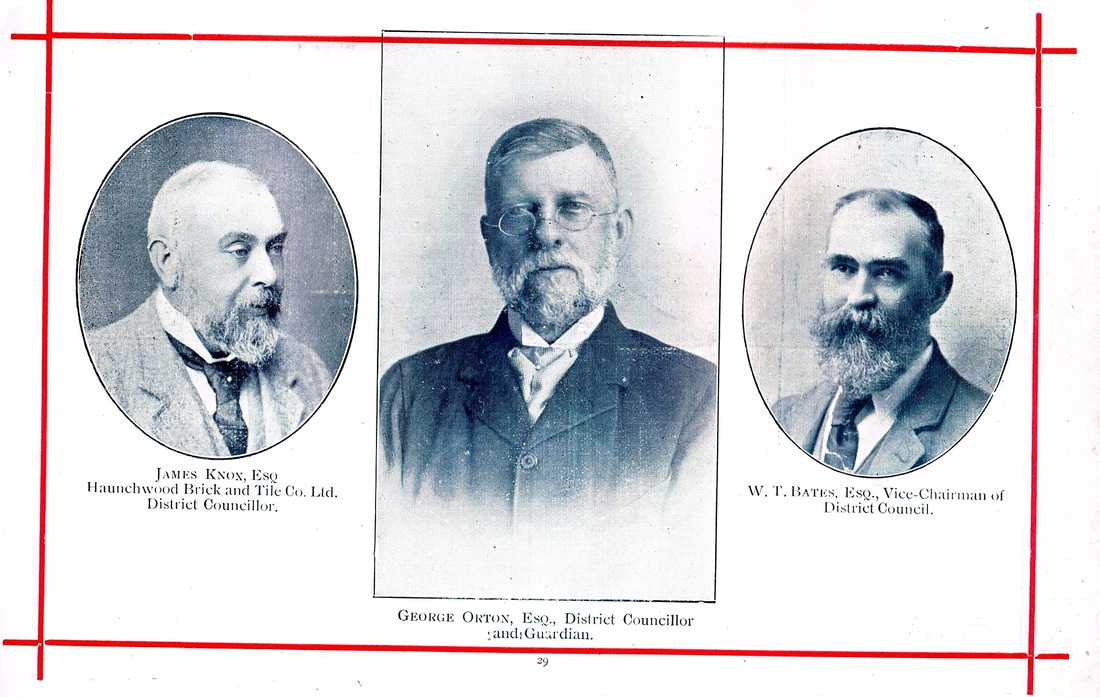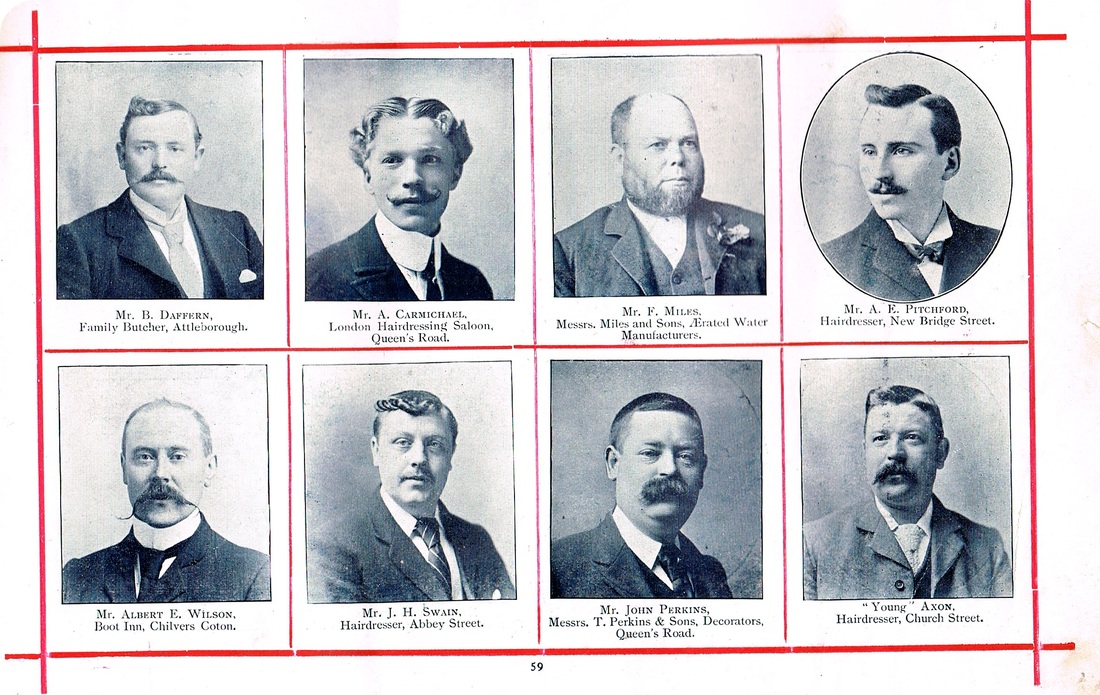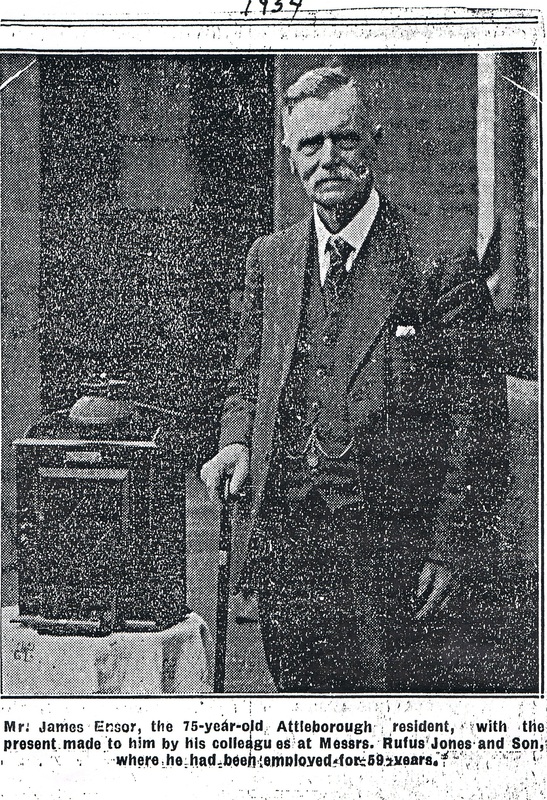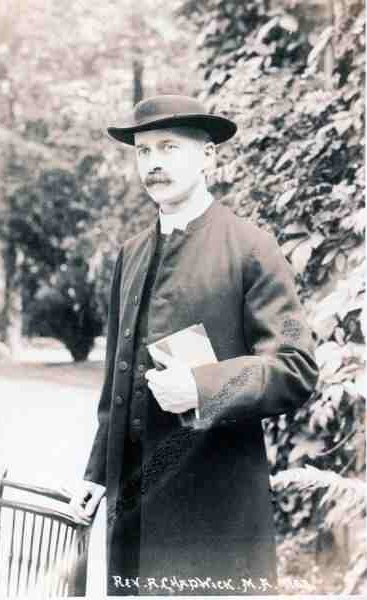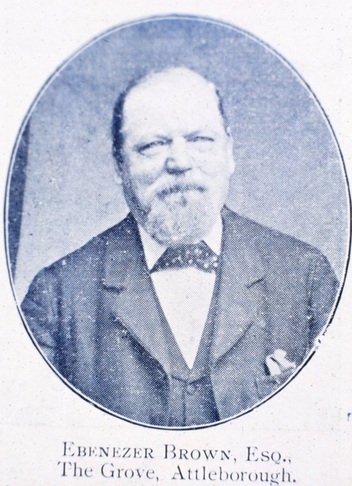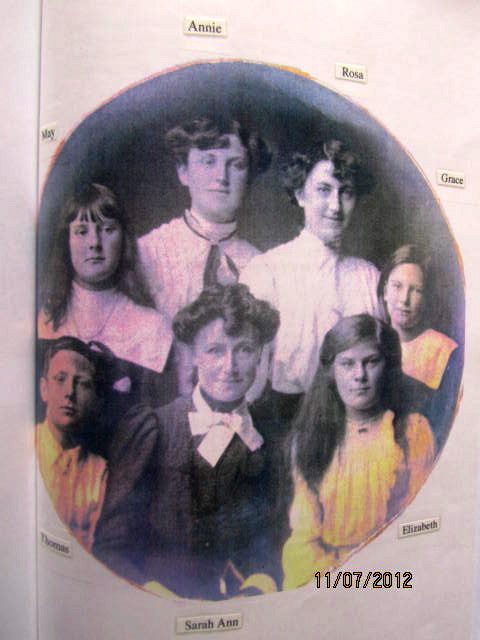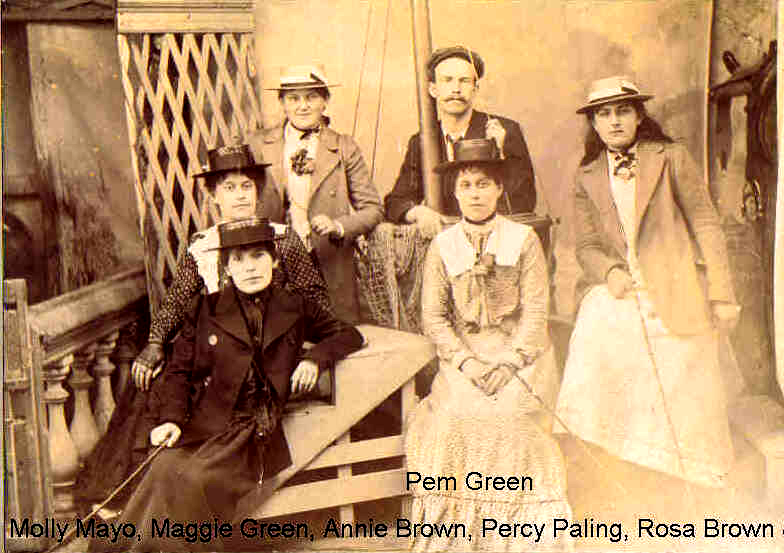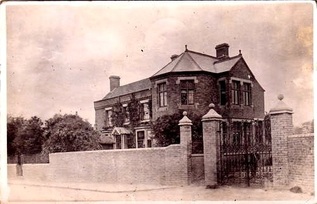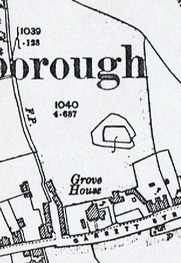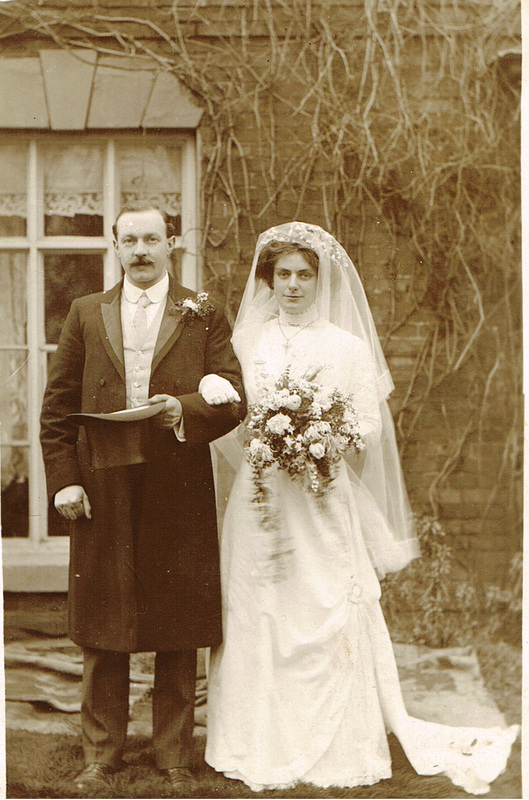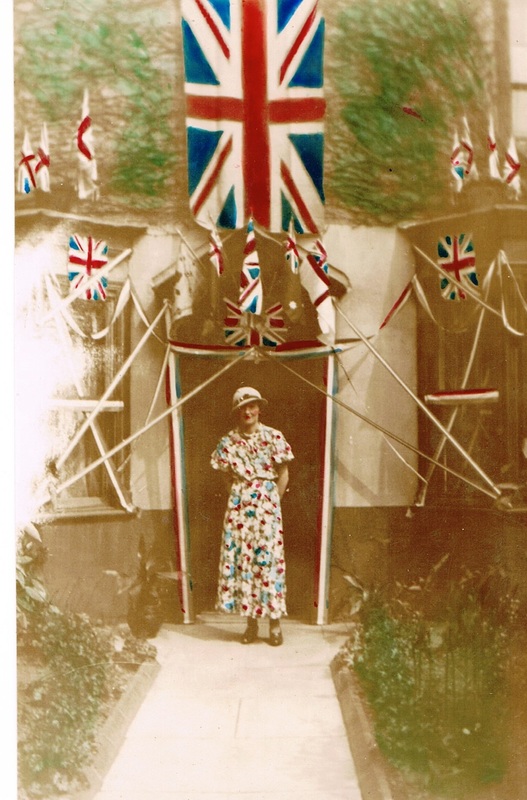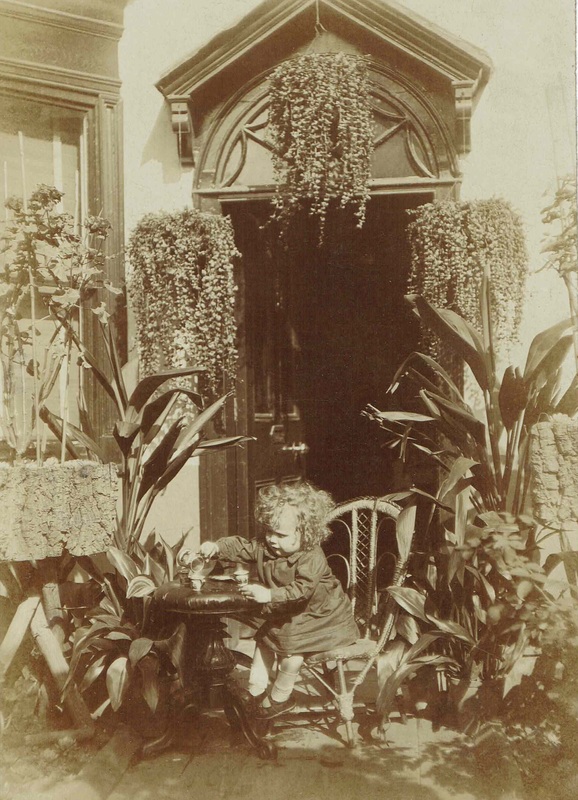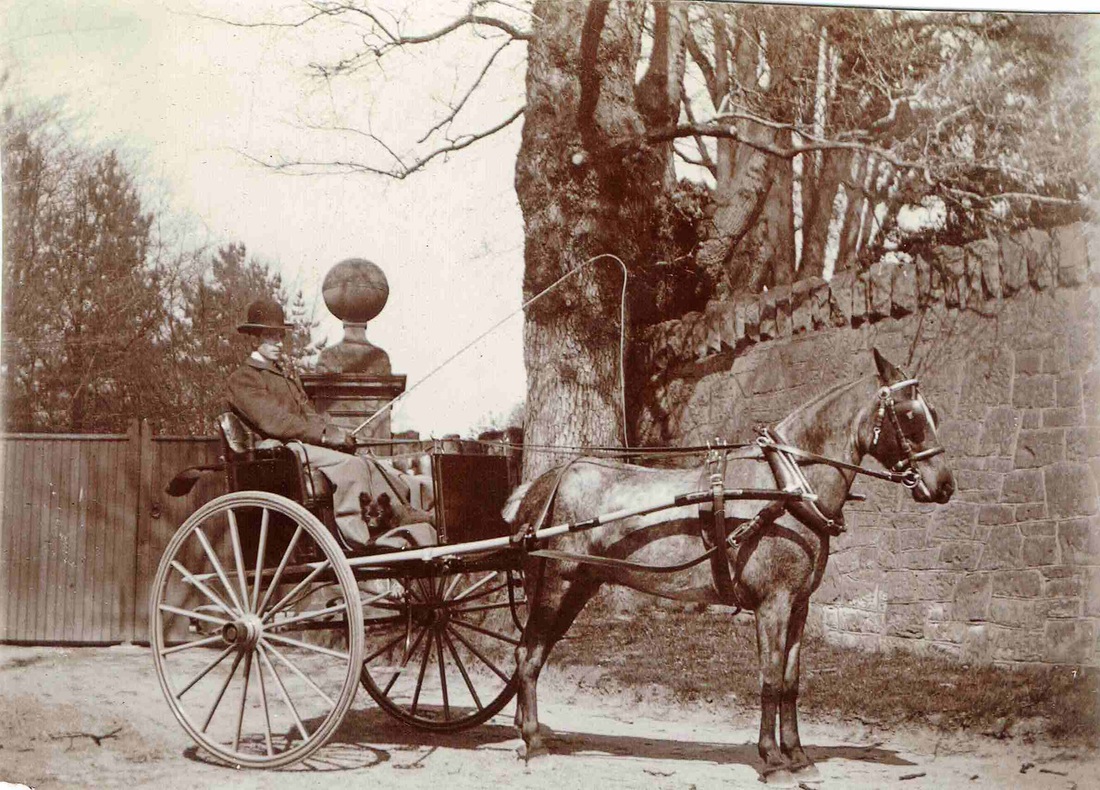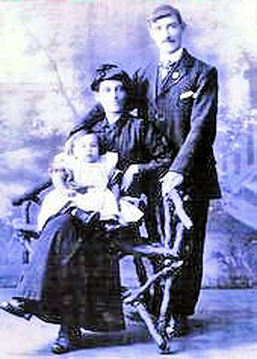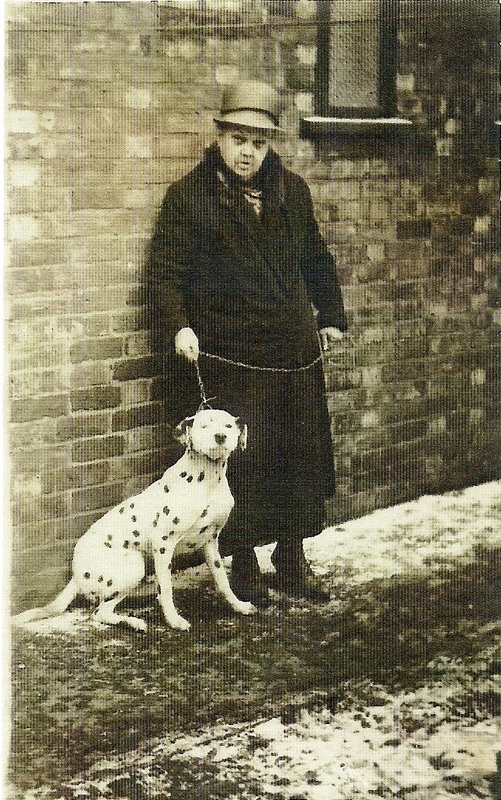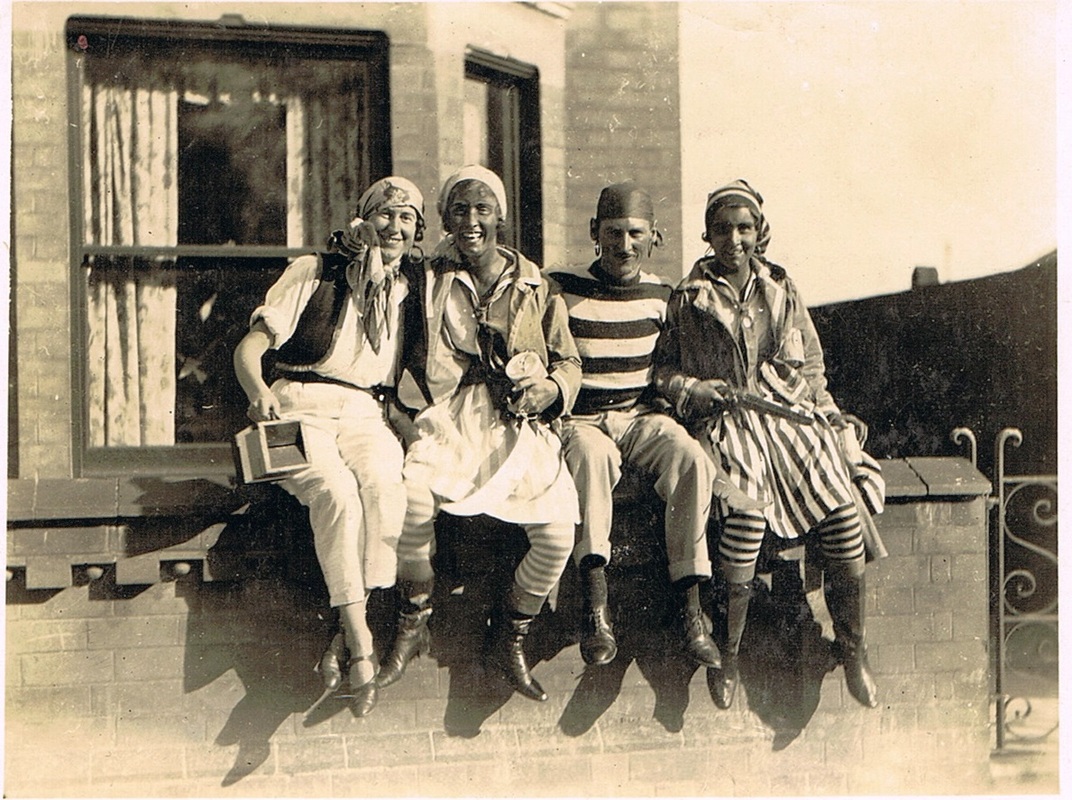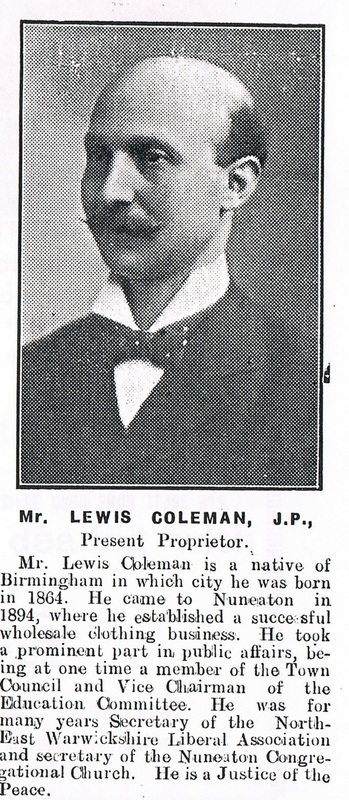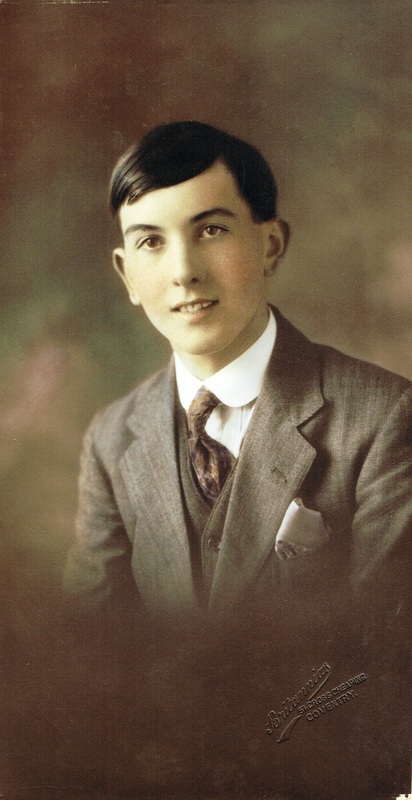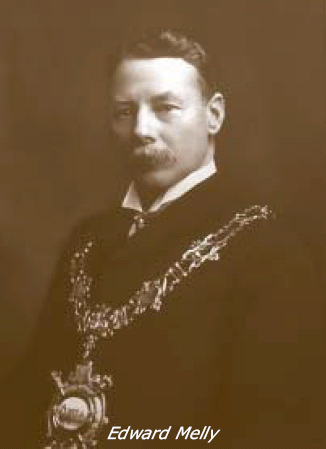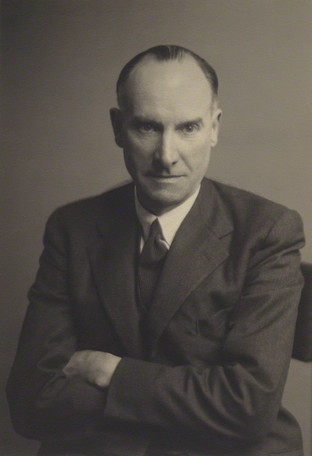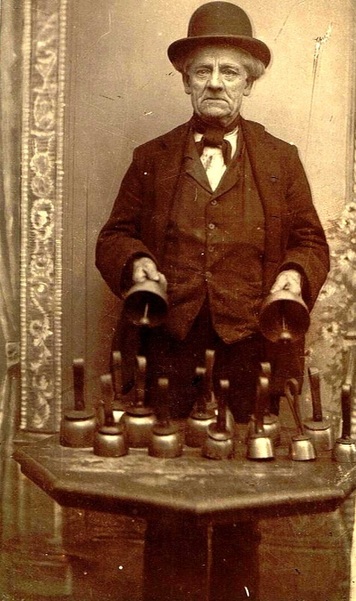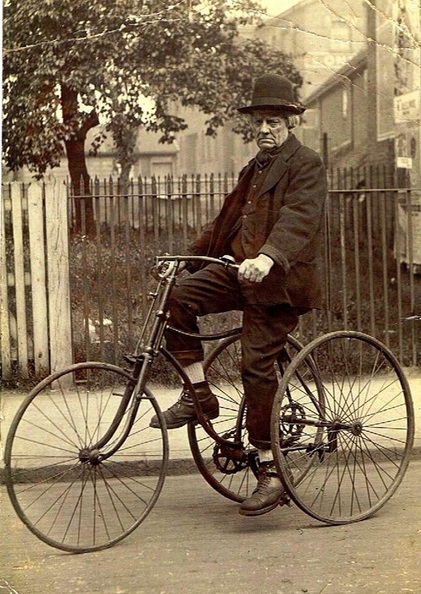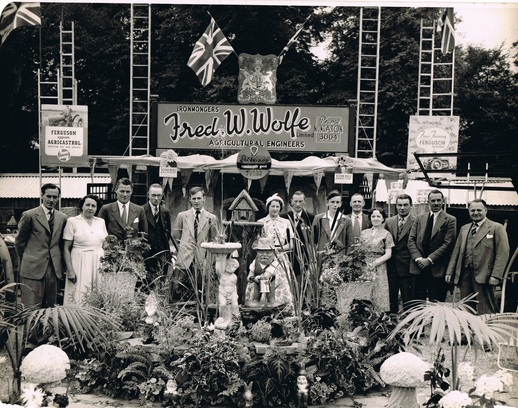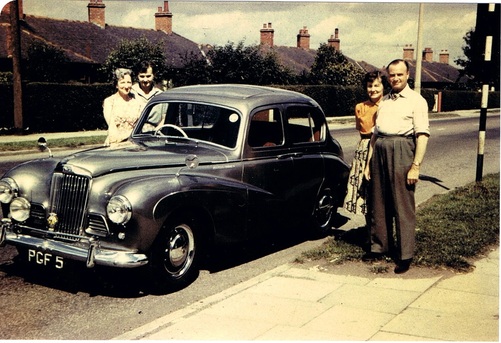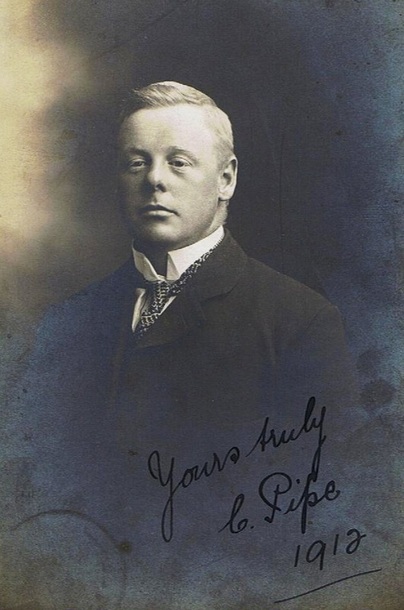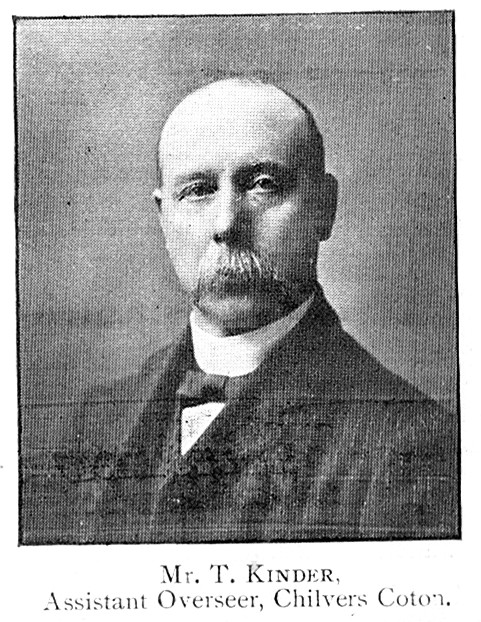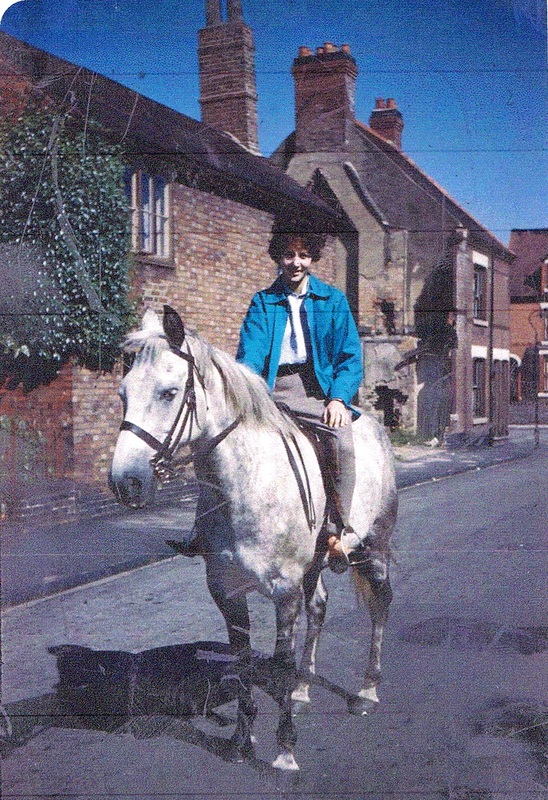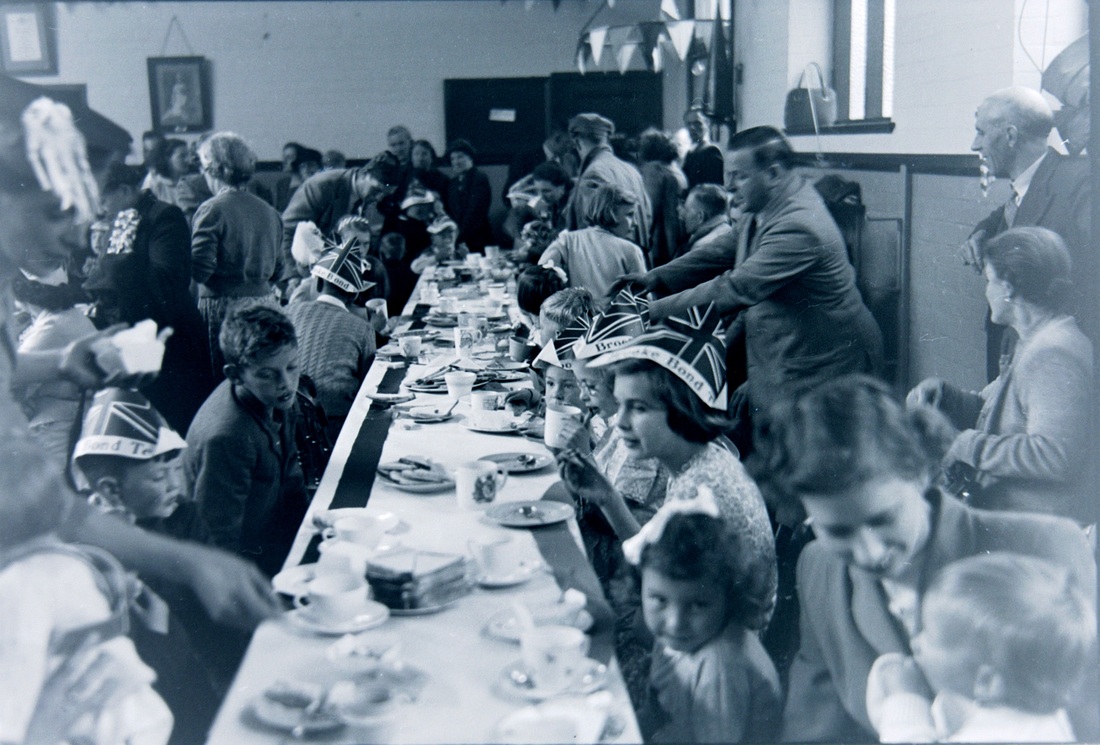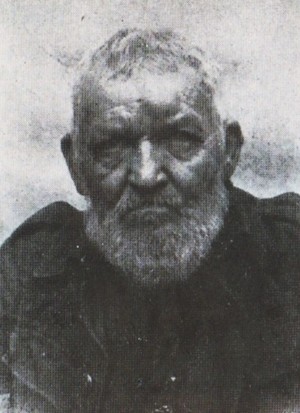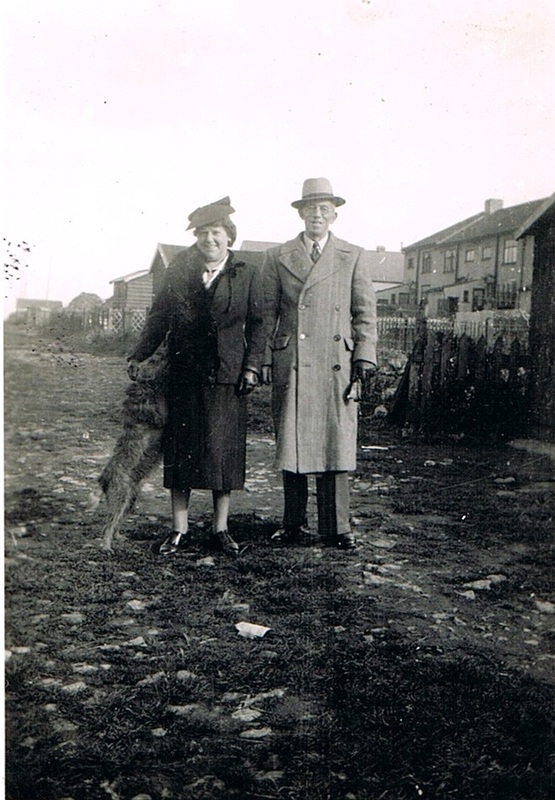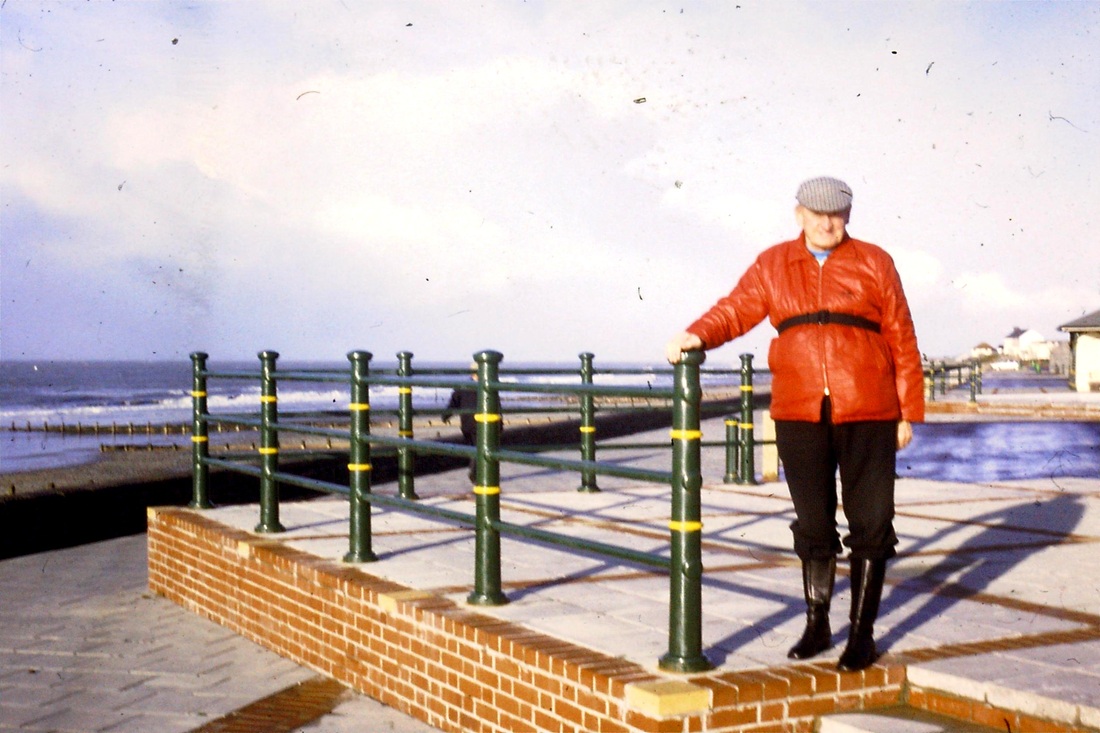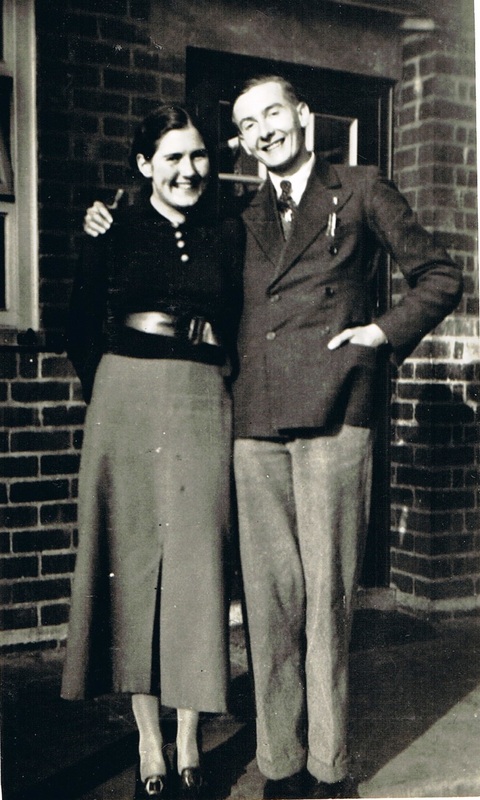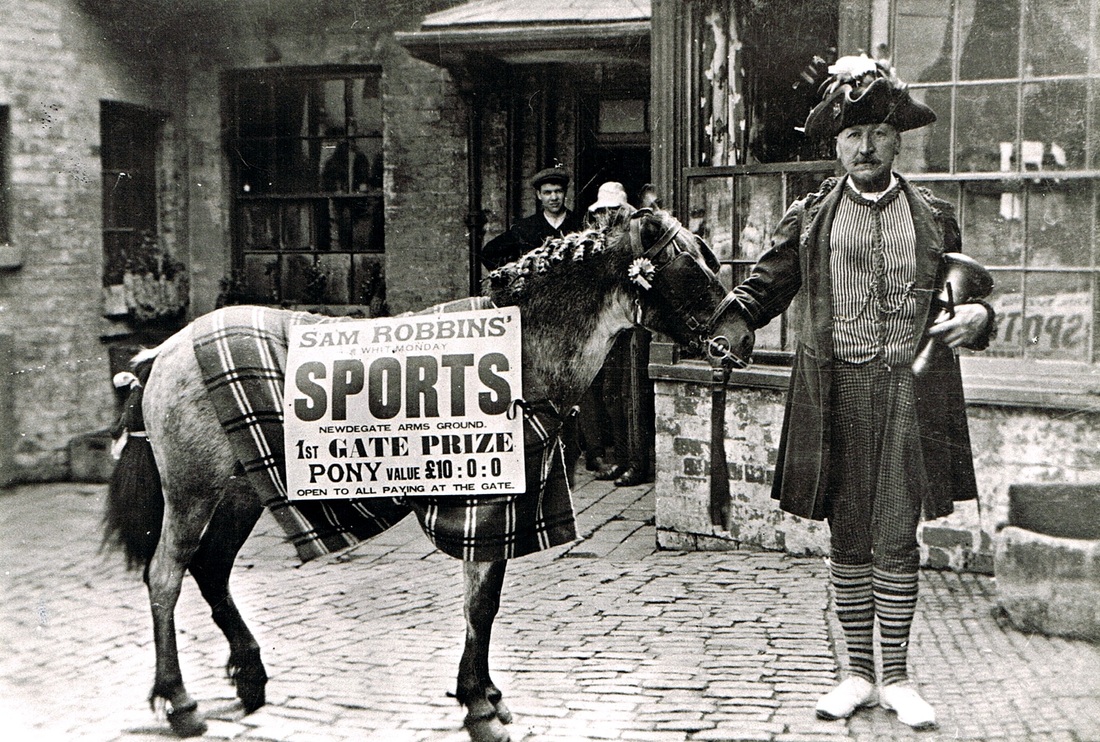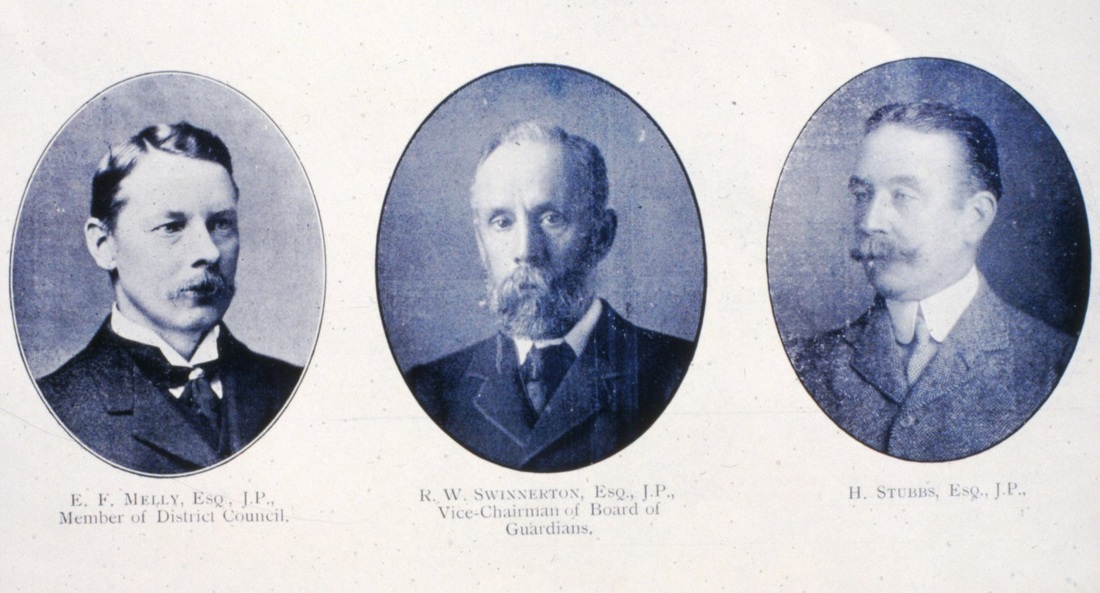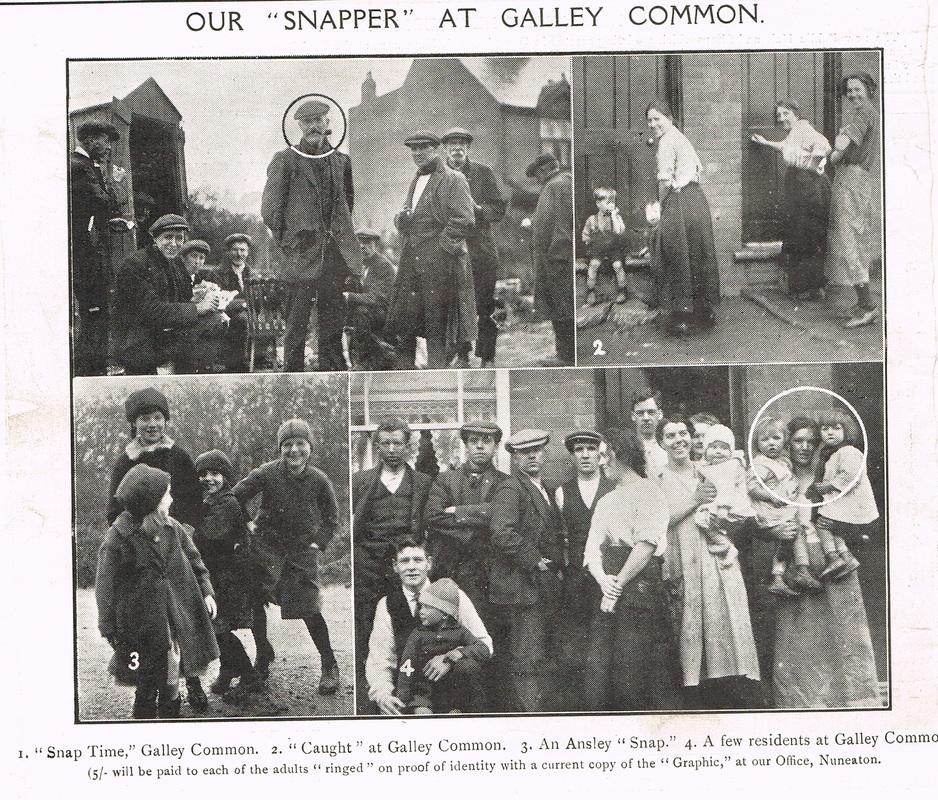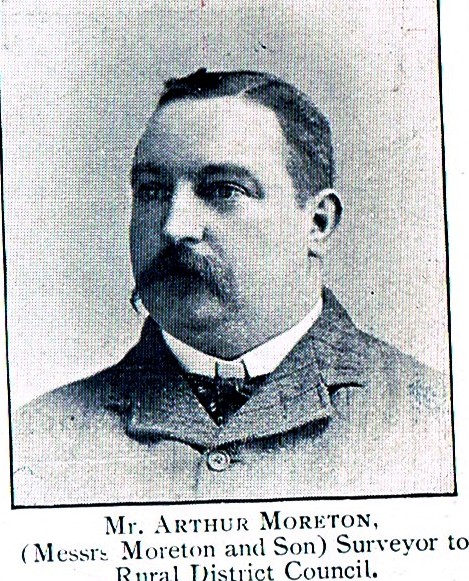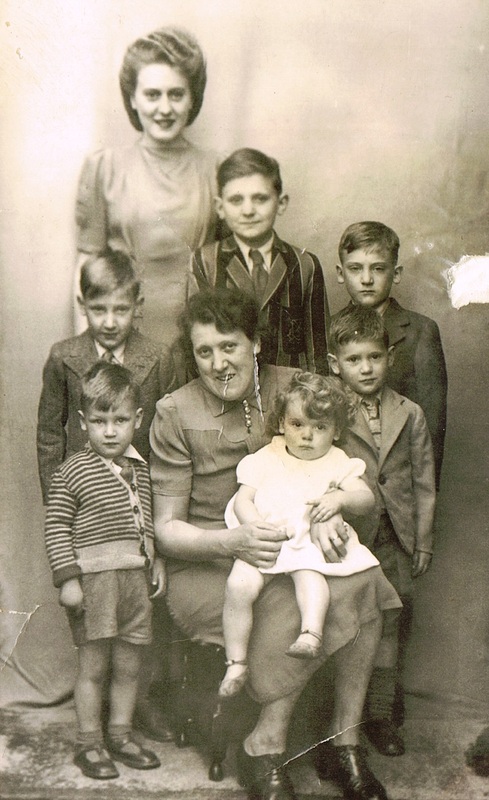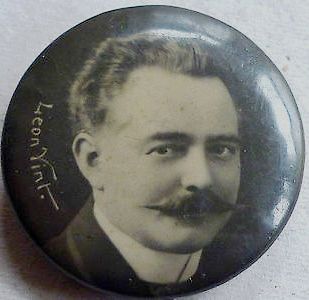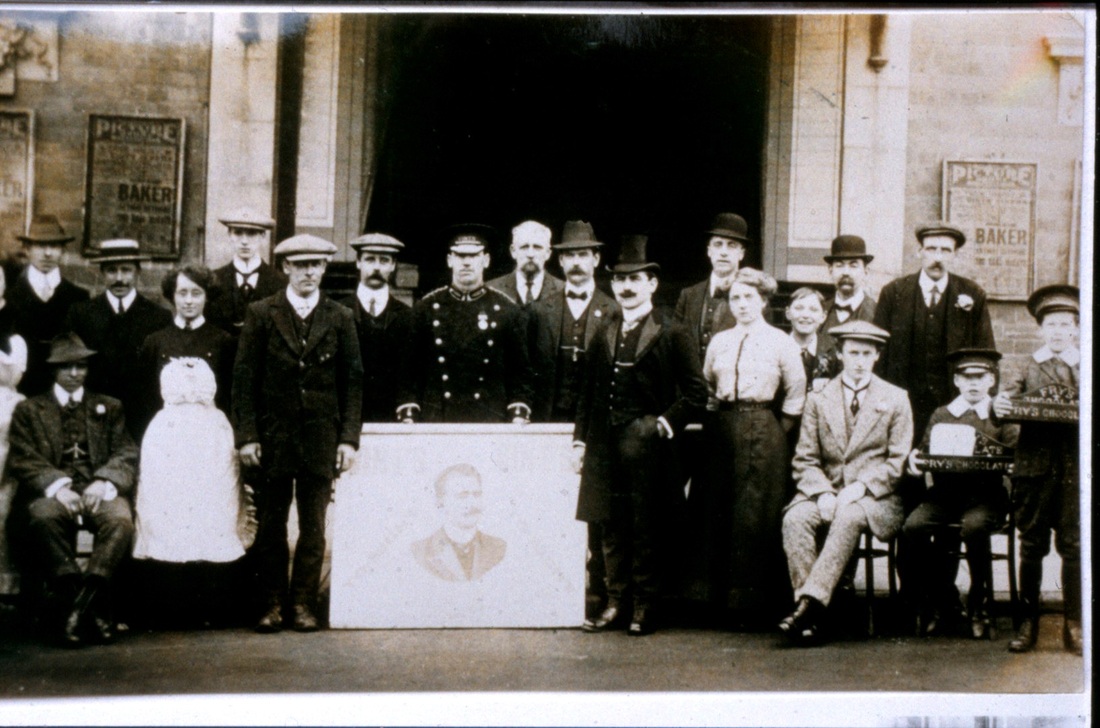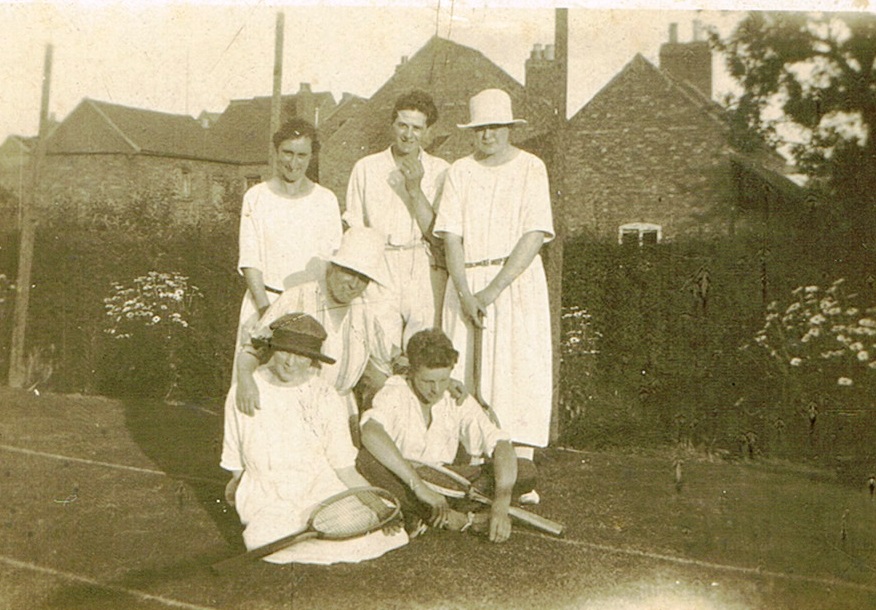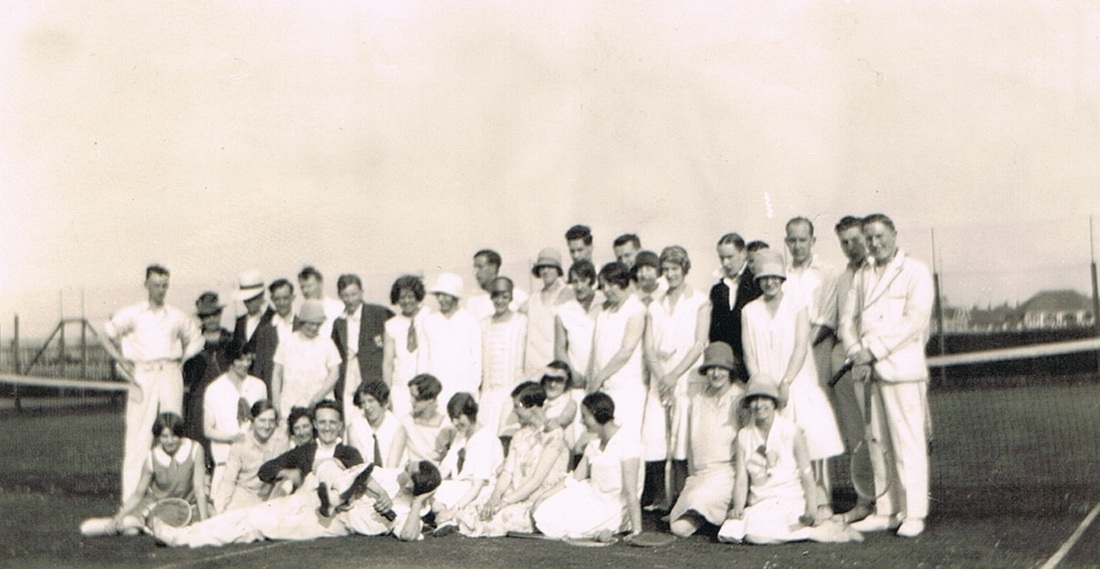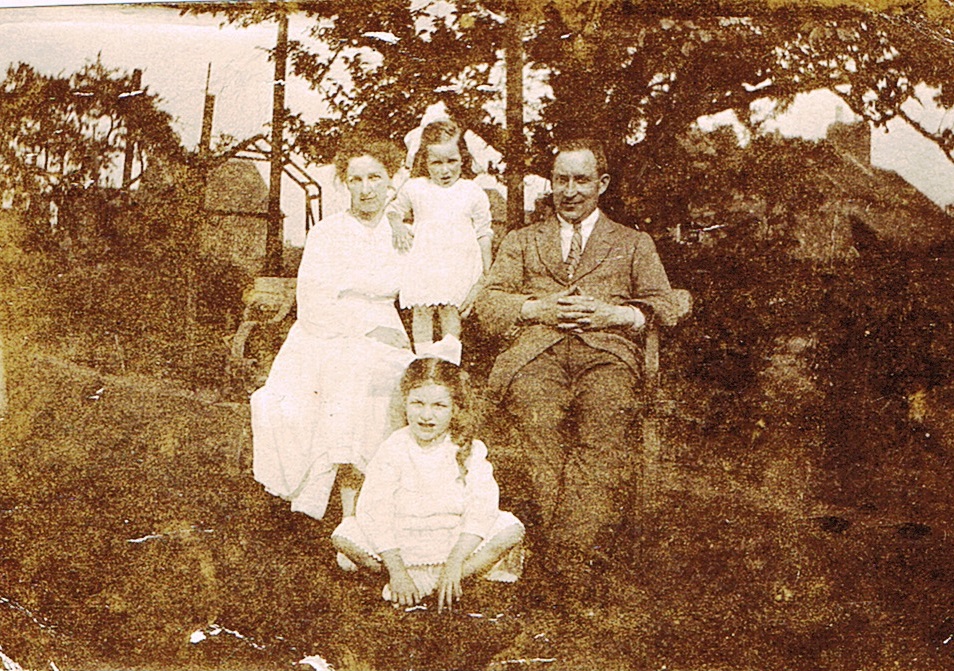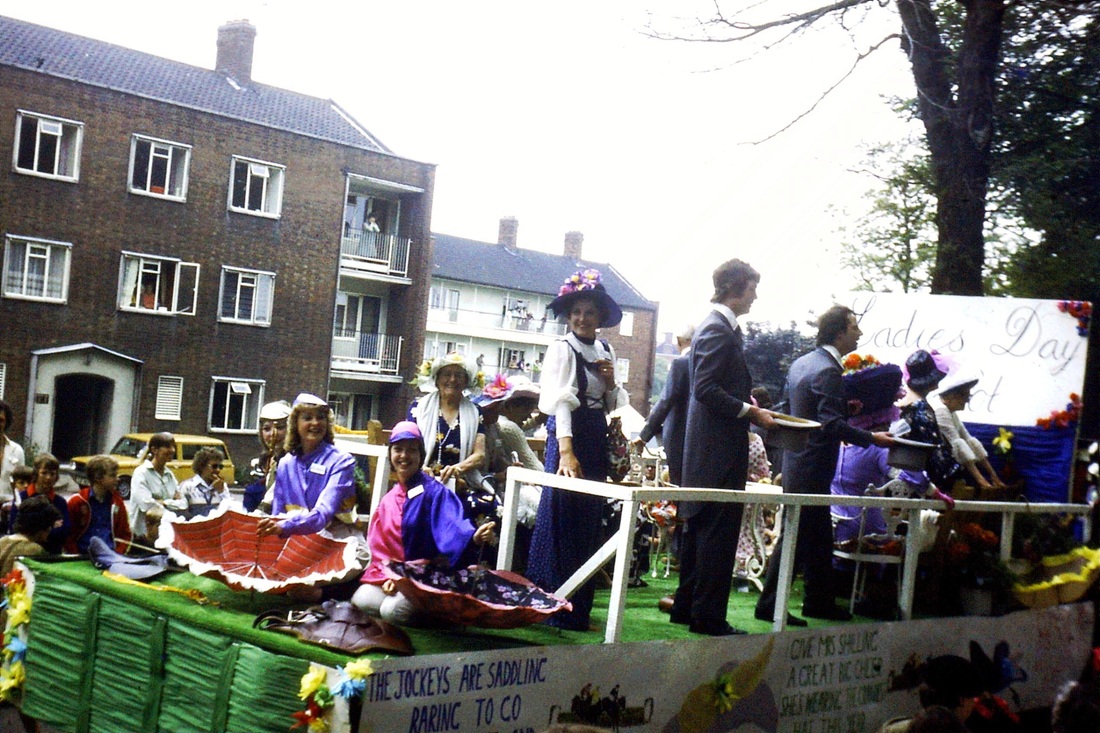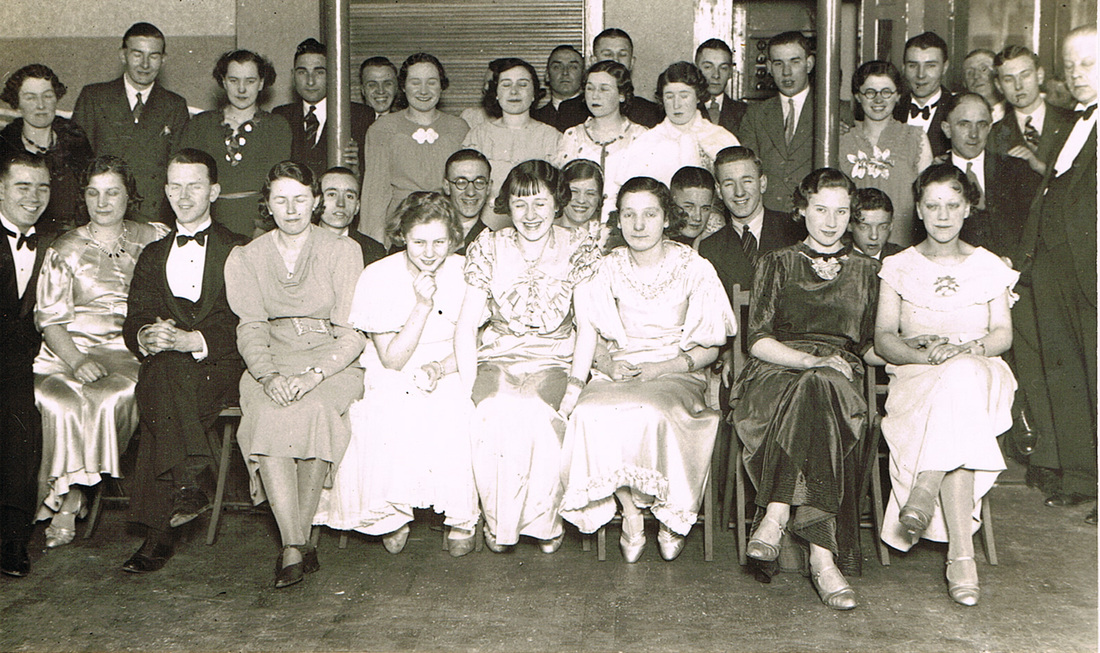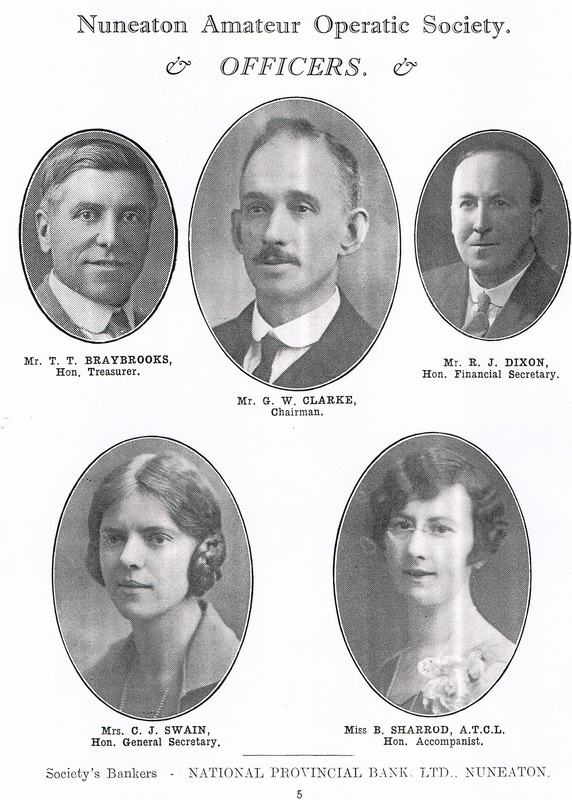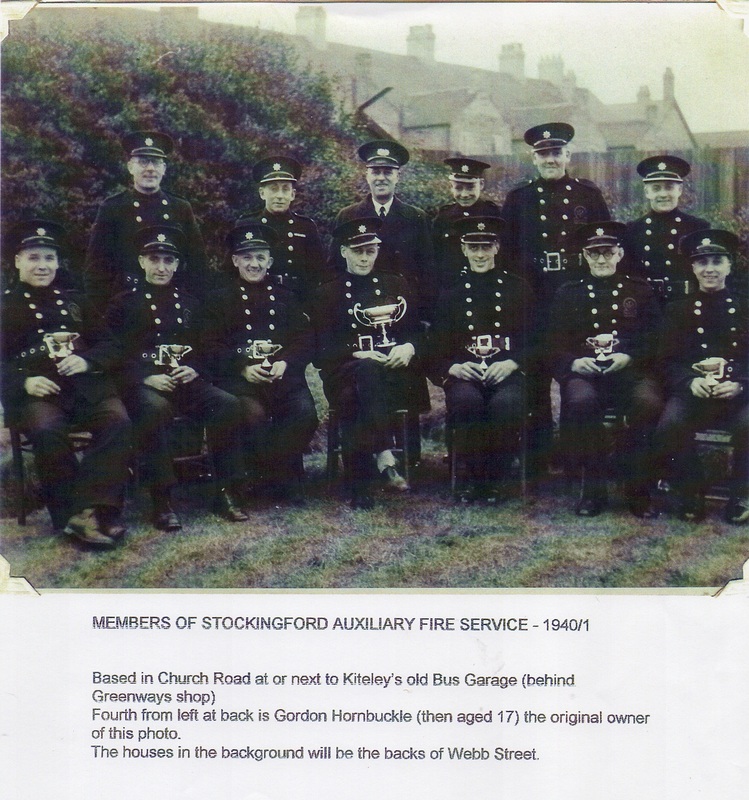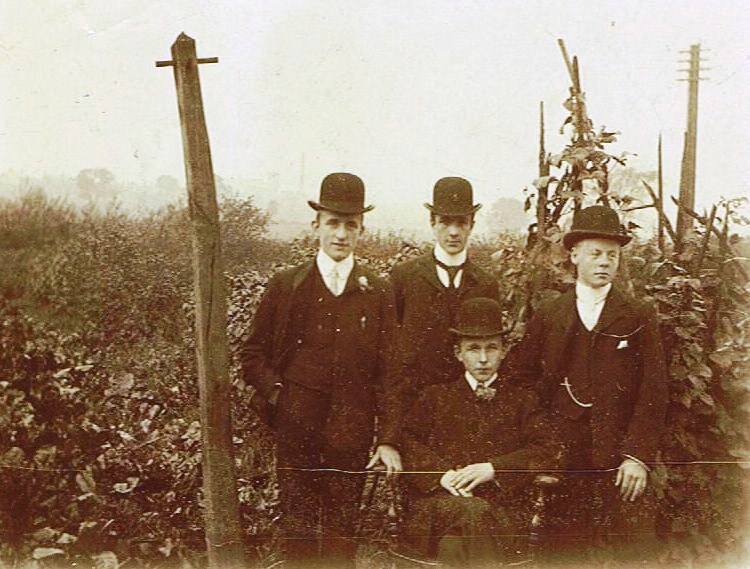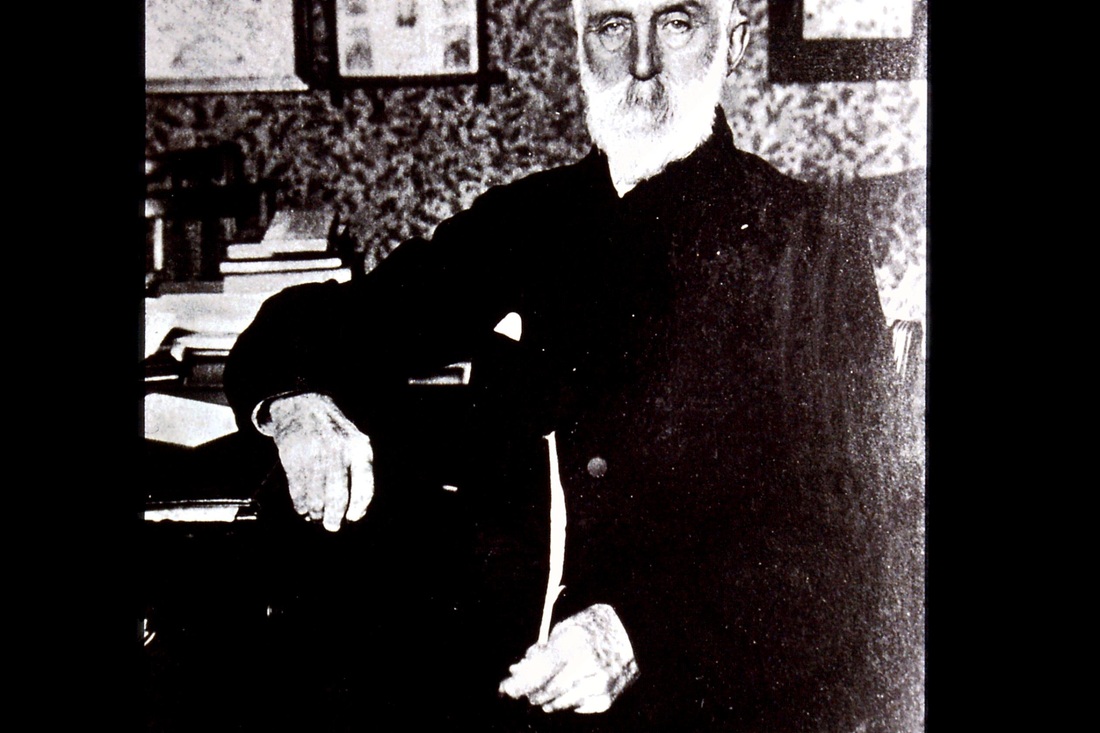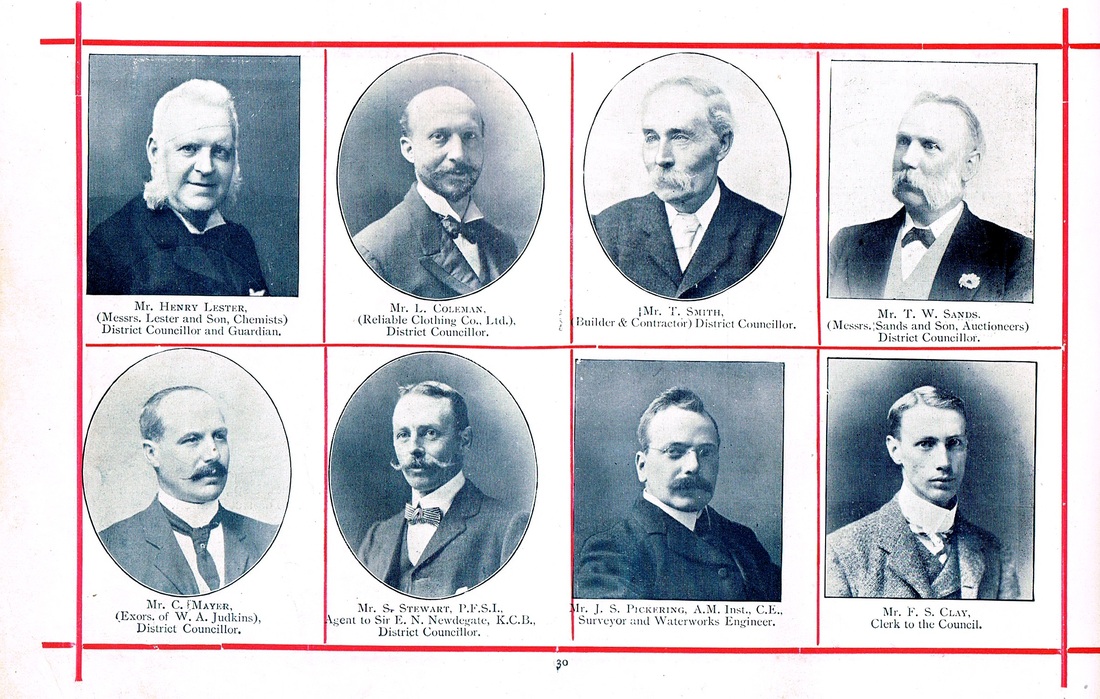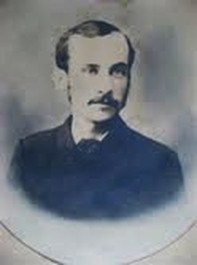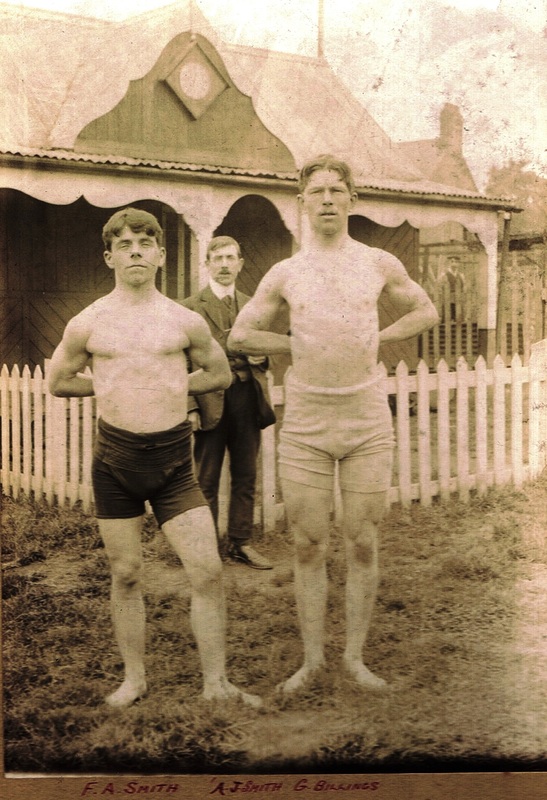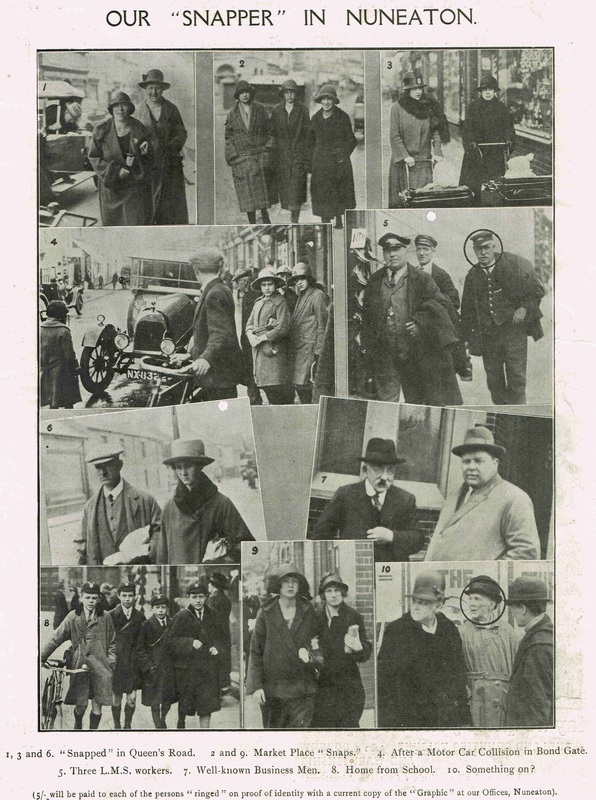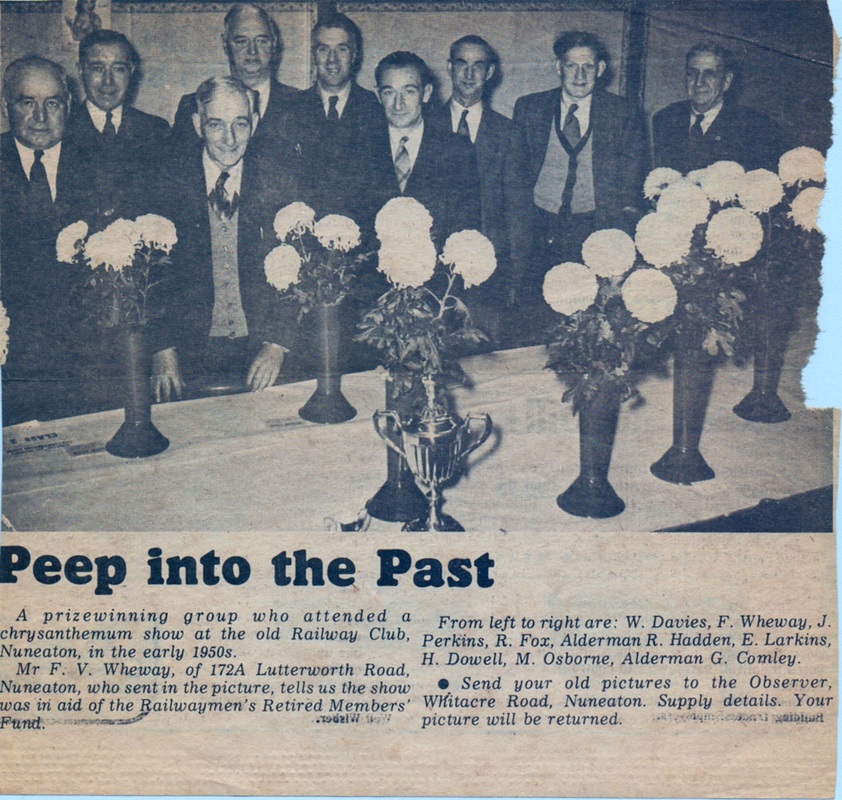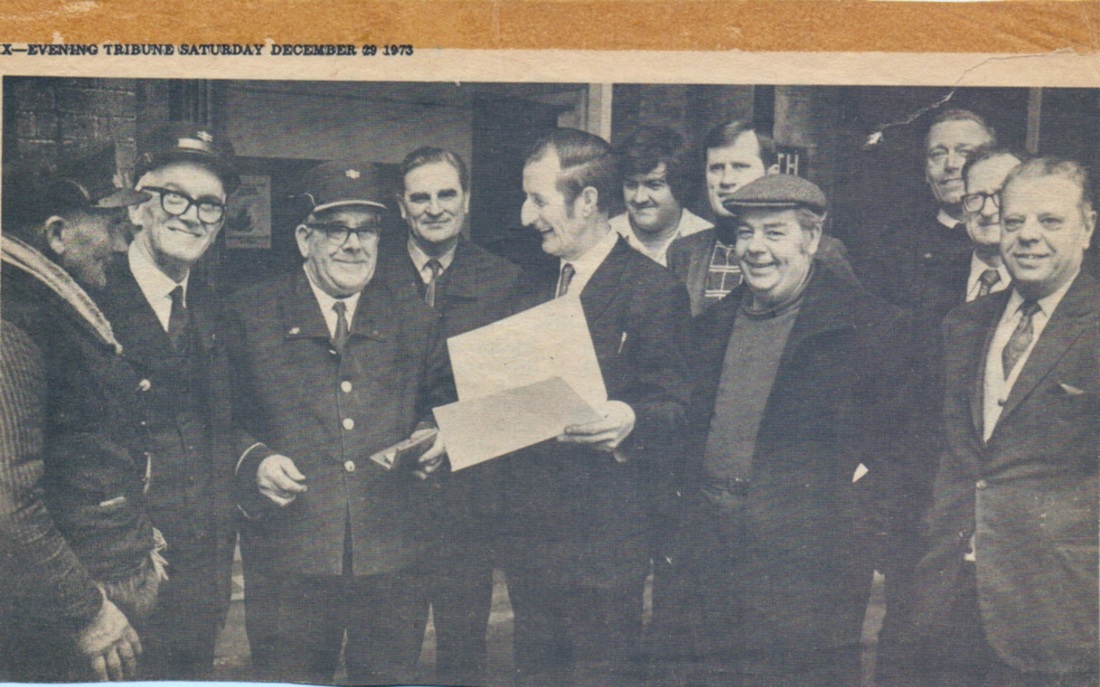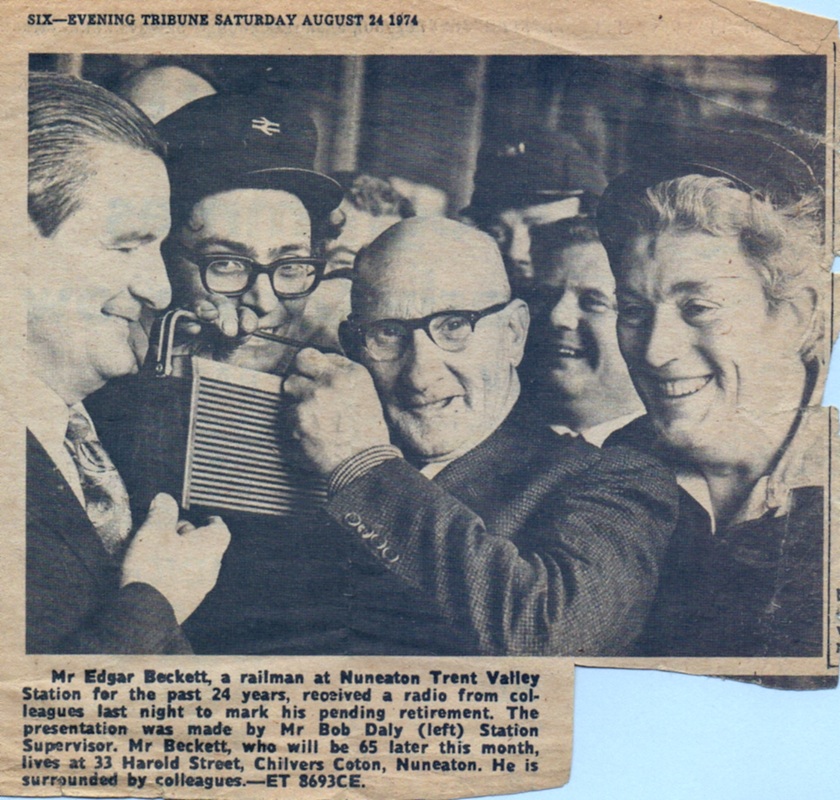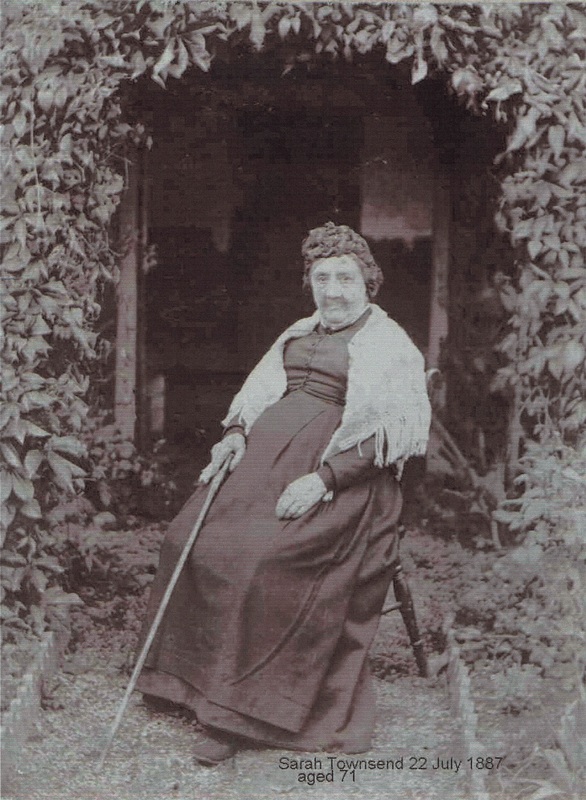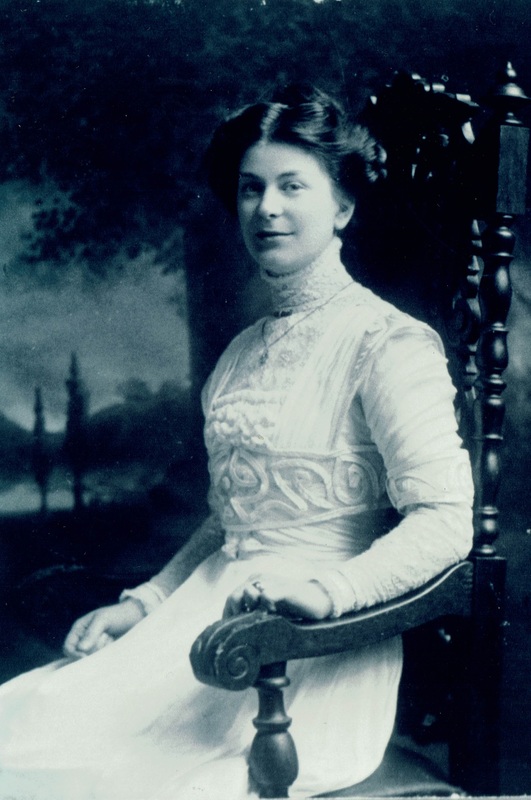Meet the cast of characters that once populated our district. All classes rubbing shoulders in a selection of photos from the archives. The learned, the humble, the achievers, the most respected, all remembered as they may never have been before.
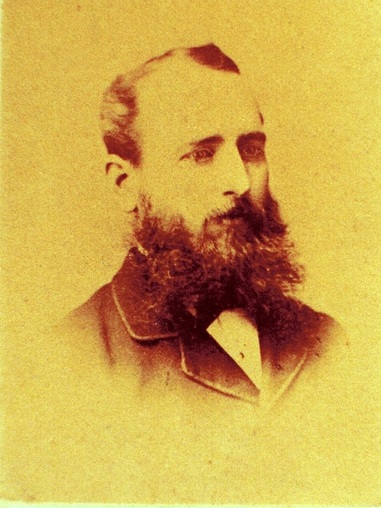
Without doubt the most important figure to emerge in local history in the Nuneaton area is Alfred Lester Scrivener (1845-1886). His was a towering achievement that links the modern town back to the 19th century and beyond. Local historians since owe an enormous debt of gratitude to this man. Although all of them did not know who the source of their information was. Now you do for the first time. For three brief years in the period 1877 - 1881 he wrote a series of articles in the Nuneaton Observer on "Old Nuneaton" etc. He had access to his father's records (Joseph Scrivener [1816-1861]) and the collective memories of old townsmen which he gathered in. Perhaps his most important achievement was saving the Nuneaton Diary 1810-1845. A record of town life kept by an old grocer whose shop was in the Market Place - John Astley. Mr. Astley preserved the town's tittle tattle. An old lady found it and brought this remarkable document into his editorial office at the Observer. The diary will appear on this web site soon. Together with Alfred Scrivener's commentary on it. He was the founding editor of the Nuneaton Observer but left Nuneaton in 1881 to take on the editorship of the Bootle Times.
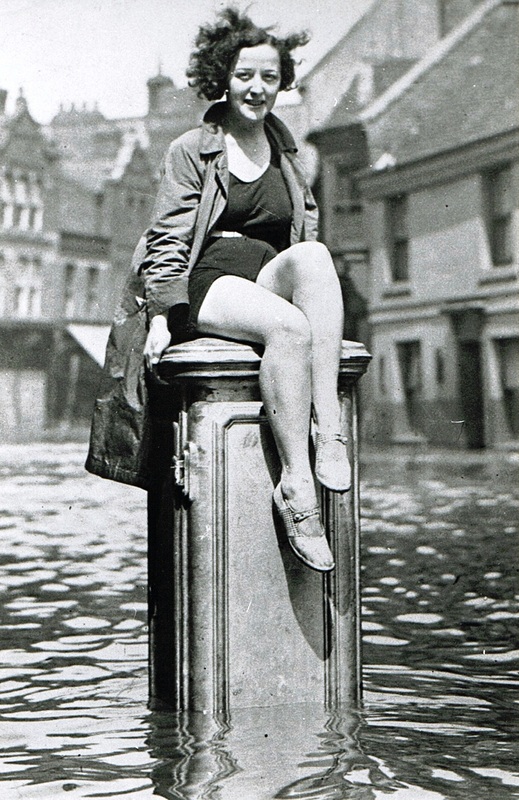
Nuneaton's Mermaid of the great flood of 1932. Stella Bailey (1912-?). Stella was one of eight children whose father W.H.Bailey was a baker in Church Street for many years. Stella married Ernest Orton in 1936 and they had an antiques business latterly in Moreton in the Marsh.(Courtesy Jean Lapworth)
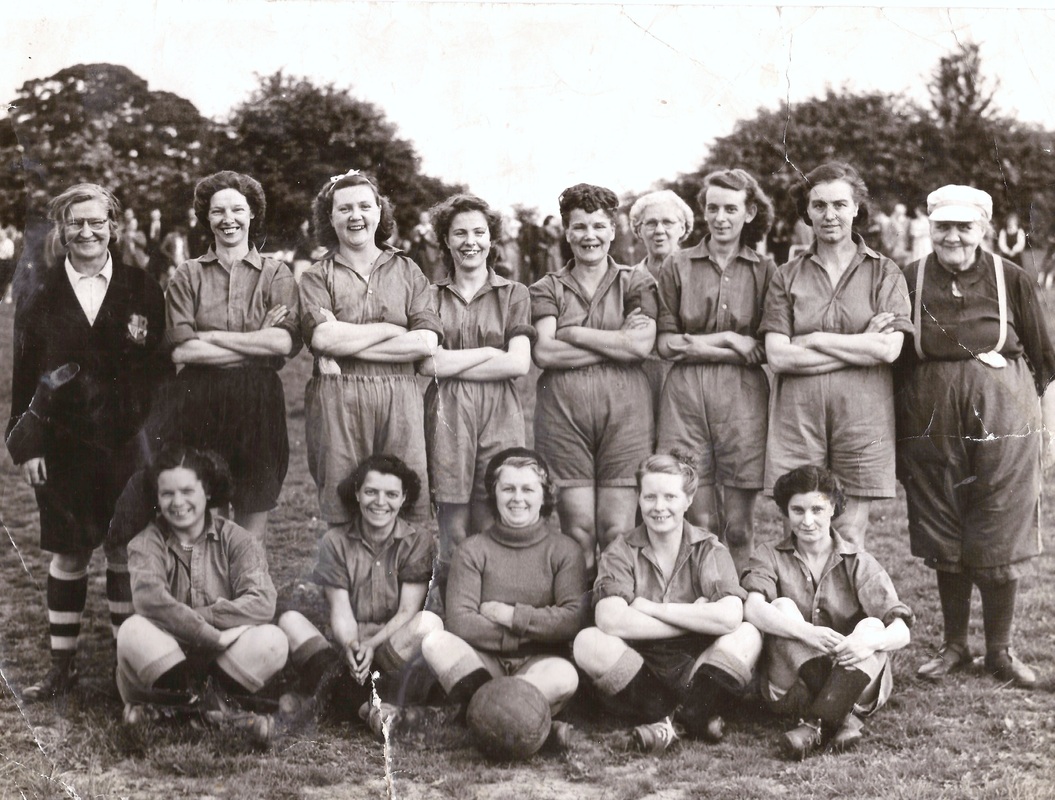
Bermuda Ladies Football Team in the 1950's.
At the rear Annie Sparrow - Manager
Back Row: L-R Mrs. Waite, Mrs. Seadon, Mrs. Kilburn, Joan Kent, Elsie Sheldon, Joan Clay, Violet Fowler, Mrs. Haycock.
Front seated on the pitch: L-R:
Mrs. Coles, Violet Tallis, Jean Kent, Ann Warren, May Gibbs. Anne Sparrow ran the village general store and sweet shop. Her husband Jack was a groundsman and gardener at Bermuda Working Men's Club. Anne ran the football team and organised the local carnival and their youngest son Joe became later Managing Director of UVA Engineering, Caldwell. (Ralph Oldacres)
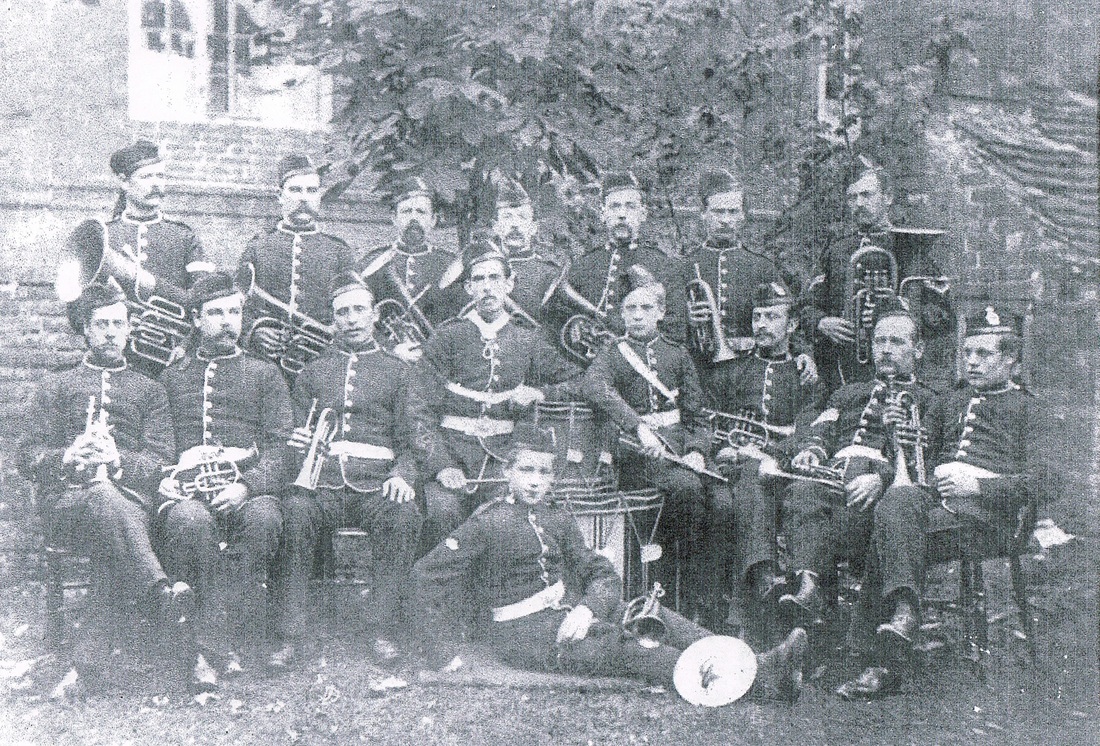
The Nuneaton Detachment 2nd Batallion Royal Warwickshire Yeomanty 1883. J.Company Band.
Back Row - John Millington, Joseph Millington, W.Ball, W.Wingate, J.Jebitt, J.Taylor, S.Wilson.
Front Row - R. Brooks, William Millington, G.Grimes, H.Green, B.Smith, J.Austin, Sgt. W.Wheatley, G.E.Jee,
Seated on the ground: J.Wheatley.
(Pauline Nottingham)
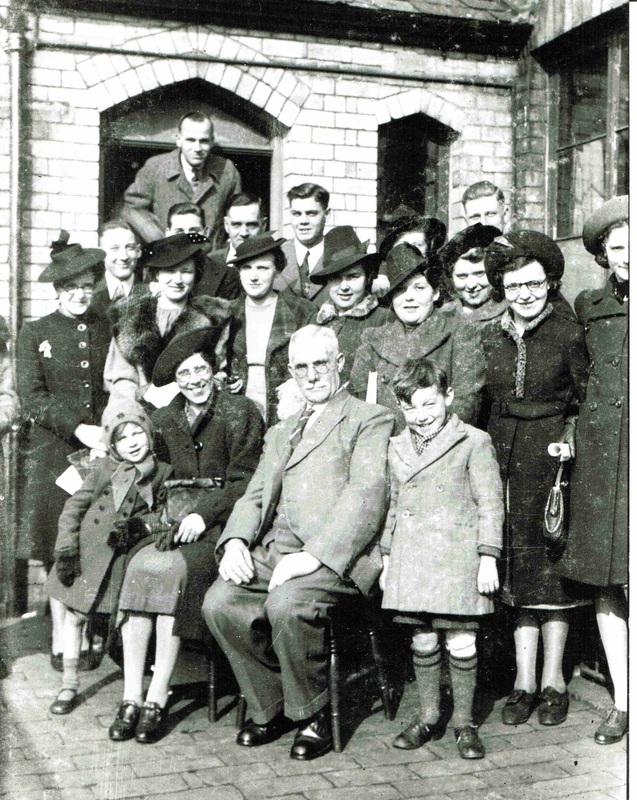
I am most grateful to Darrell Dunning who has provided me with information to upgrade this photo from a mystery photo to one where a goodly number are identified. We would like to complete the names thats for sure.
This photo hangs in Darrell's entrance hall and the photo was taken at Arbury Methodist Church probably in the late 1930's. The fellow towering over everyone at the back is Darrell's dad - Ernie Dunning. Also in the picture are his dad's sisters Doreen (Kendell), Eileen (Meachem) who still live in the town. Darrell's Auntie Iris nee Pugh who married his Dad's brother - Ken. Darrell and his family lived in Webb Street.
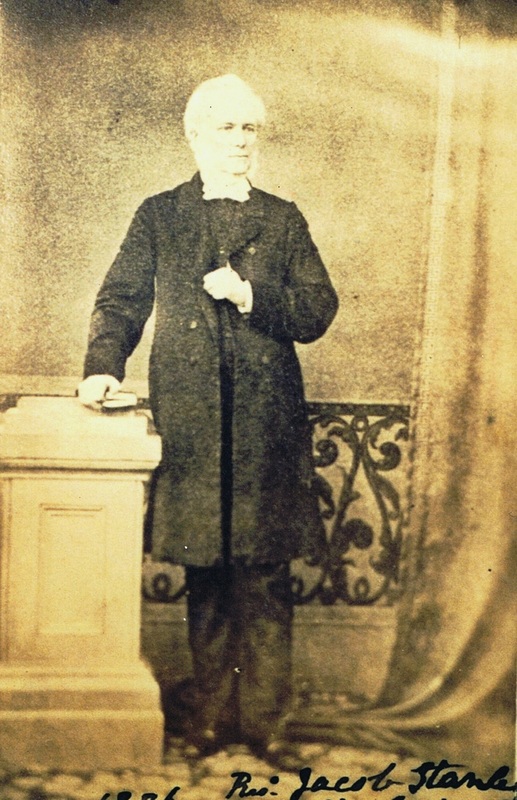
Although not a native Nuneaton, the Rev. Jacob Stanley, inadvertently was a major influence on the history of Nuneaton as his son Reginald Stanley became the owner of a major brickyard locally and went on to become one of the town's major employers and one of the big four brick makers in the country. Rev. Jacob Stanley (1804-1886) married Susannah Jenkins on 13.7.1835 who had the following children:
Susan Stanley b.1836
Reginald Stanley b. 1838 Hayle, Cornwall
Jacob Stanley b. 1840 Great Torrington, Devon
Ellen Stanley b. 1842 Trowbridge, Wiltshire
Frances Stanley b. 1844 b. Weymouth, Dorset
Lucilla Stanley b. 1845 Weymouth, Dorset
Reginald Stanley emigrated to America in the 1850's, and his American diary has survived. This will feature in this web site shortly.
Jacob Stanley went on to be an artist in oils of some repute. Their story will be published on this web site. (Reg. Rowley)
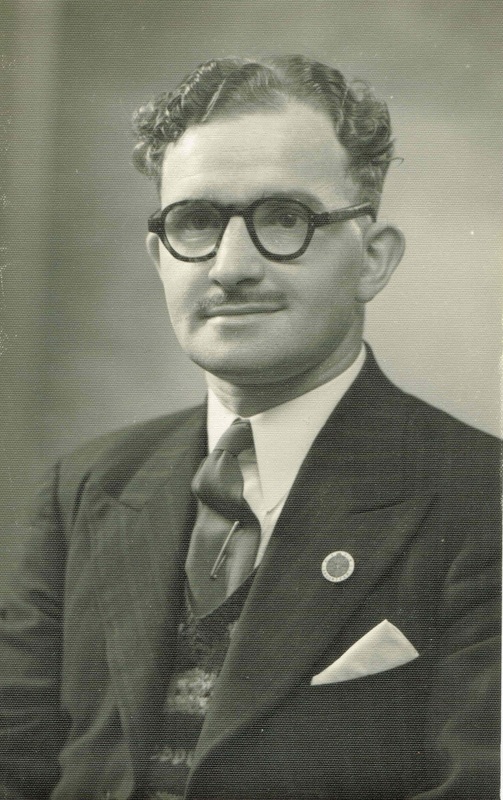
Walter T. Prince (1913-1951) a photograph probably taken not long before his untimely death. Wally drove a loco underground at Haunchwood Colliery (Tunnel pit) and was killed in an accident driving it. It was a tragic event and it effected many of his friends down the pit. He lived in Bucks Hill, Chapel End. Wally was a staunch Trades Unionist. (Lee Family Collection)
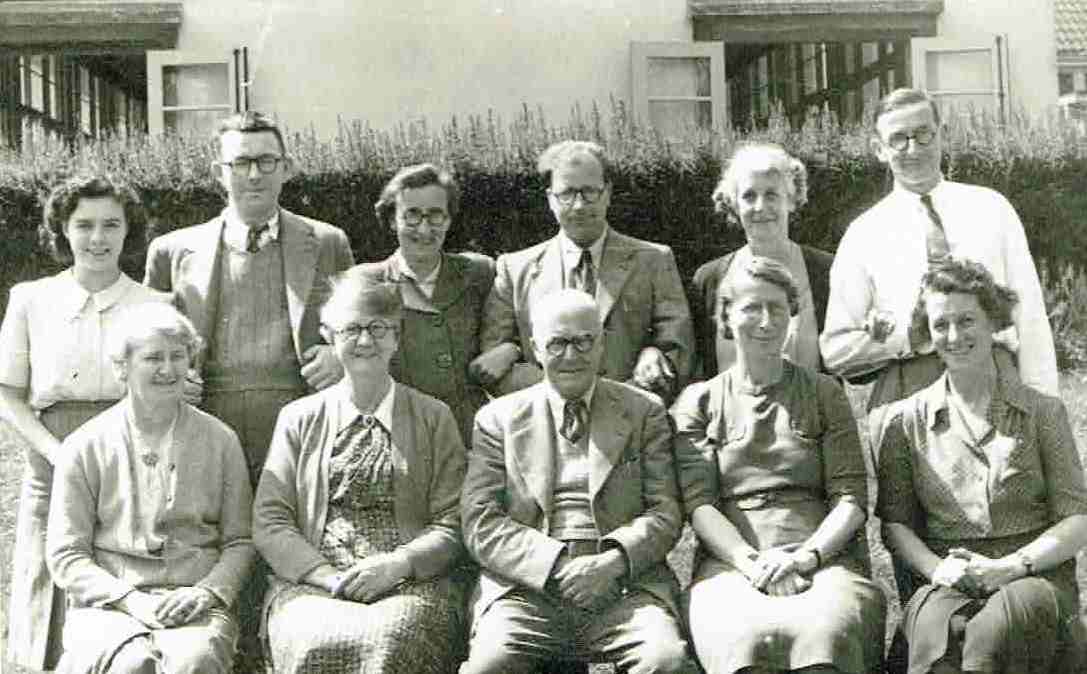
The staff at Exhall Wheelwright Lane Junior School June 1949.
Standing: Miss E. Johnson, Mr. E.Greening, Miss C. Knight, Mr. G. Johnson, Mrs. A. Drakeford, Mr. G. Edmands. Seated Miss L.E. Soult, Miss C. Harrison, Mr. E.S.Ward, (headmaster) Mrs. A.L.Deeming, Miss. O. Geary. (staff missing Mr. P. Cocker)
(Geoff Edmands Collection)
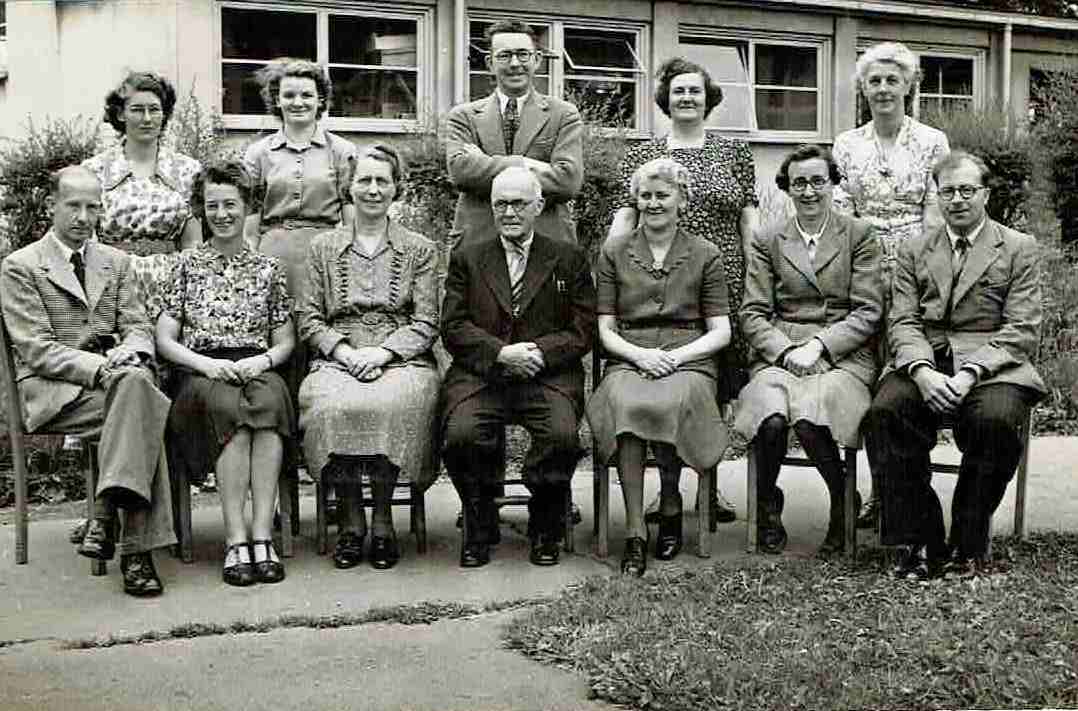
The staff at Wheelwright Lane Junior School, Exhall. July 1950.
Standing: Joan Bruce, Margaret Williams, Edwin Greening, Mrs. E.S.Ward, Mrs. A. Drakeford,
Seated: Philip Cocker, Olive Geary, Mrs. A.L. Deeming, Mr. E.S.Ward, (headmaster), Miss L.E.Soult, Clarice Knight, George Johnson.
(Geoff Edmands Collection)
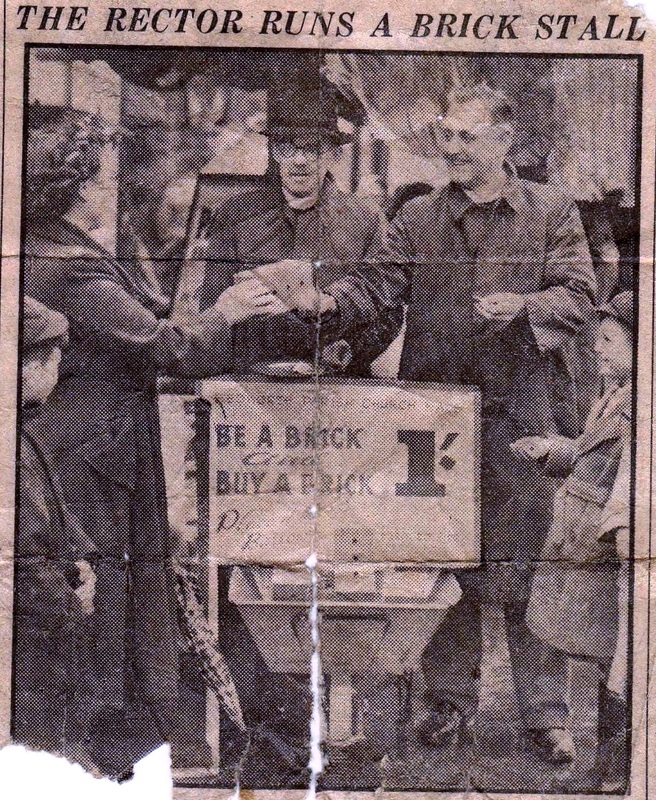
Bedworth Market Place 1955. The man on the right selling bricks is the well known Canon Maggs and the stall is in aid of Bedworth Church Hall in Park Road. The clerical looking gentleman in the middle is not known currently. (The church hall was later demolished).
The boy on the left is Lawrence Moore (Alison Moore's father) and the lady buying a brick is Nelly Wilkes, formerly of Mile Tree Maggot Farm in Bulkington. Thank you also to Linda Burton for help with the description. (Alison Moore Collection)
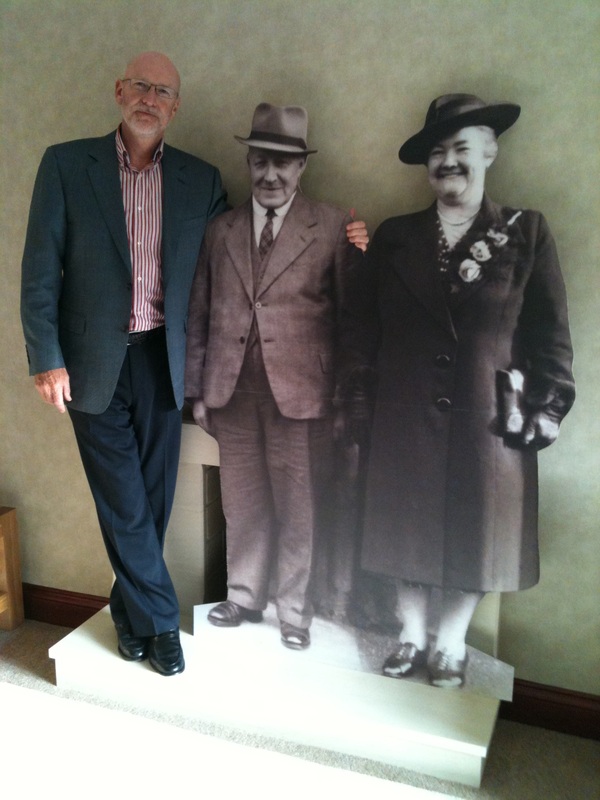
David Sidwell with his grandparents - George Clarke (1885-1960) and Gertie (Gertrude Brookes) (1888-1955). George Clarke kept a remarkable memoir of his life in Nuneaton. Written in beautiful copper plate writing his grandson David Sidwell has, through the application of modern technology brought George's account of his life into the 21st century and this is now available as a paperback book. Although George's story is a personal memoir it is something more than that it is the story of one man's observations of life in a mining community in which he was an observant participant. Not only this although George came from a humble background it is beautifully written and when it comes to family and social history as good as it gets. Copies of the book can be obtained by emailing myself, Peter Lee, through this web site or by ordering the book through Waterstones in Nuneaton. David has carried out a great service not just to his grandparents who will now live forever but to people interested in this community in the late 19th century to the late 1950's. It is in effect one of the finest testimonies to family history I have ever seen in 40 years of being a family historian in my home community of Nuneaton. (David Sidwell).
| Fenny Drayton - The First Quaker | |
| File Size: | 403 kb |
| File Type: | |
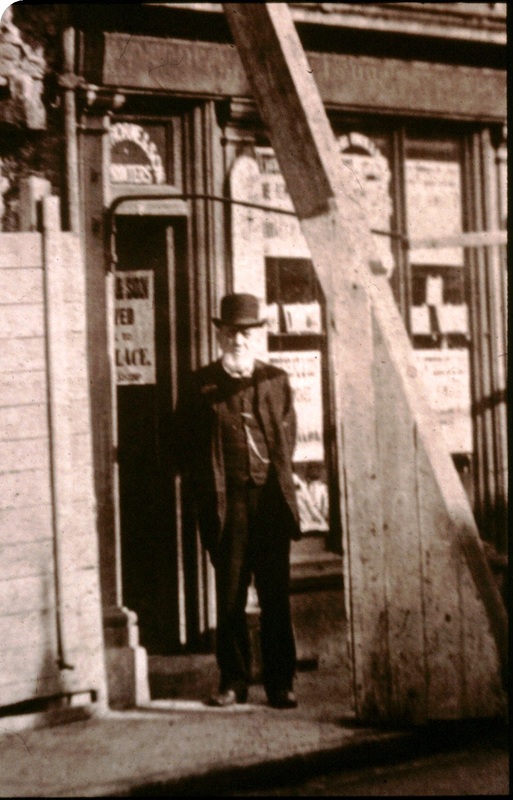
William Cawthorne, the printer and stationer. C. 1909. This old established business is still thriving in Nuneaton and dates back to Thomas Short, who was in business in 1835. Mary Short, Thomas's widow sold the business to Edward Houlston who in turn sold it to William Cawthorne we see here in 1868. The large timber buttress is to shore up the building next door which was being taken down and rebuilt in 1909.
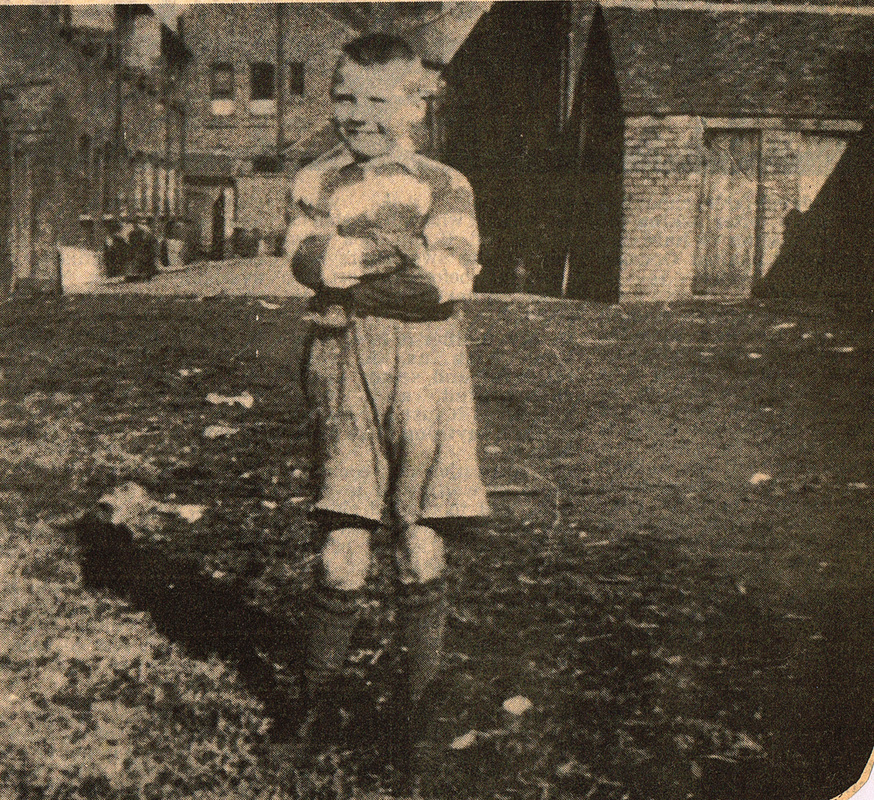
The famous Rugby player - Wally Holmes as a kid in the back yard of his home, known as the George & Dragon yard in Queens Road, Nuneaton. As its name implied the 10 court cottages that made up this yard was in the back yard of a pub called the "George & Dragon". These cottages were built in the 1820's on a piece of ground called "The Ropewalk" and this is how the shopping centre that stands there today got its name. The cottages, however, were poor accommodation and by the 1930's were derelict. The original rope maker was Joseph Scrivener who came to Nuneaton sometime between 1810-1820 and purchased this piece of land to lay out a long lineal strip for his Rope Walk. Most towns had their ropemakers and he made everything from heavy ropes for industry through to cord and string for wrapping parcels. It was a lucrative trade at one time. His "Good Front House" was converted into a pub, and he built two rows of cottages for tenants. Thereby ensuring a captive audience for his pub trade. Joseph Scrivener's grandson was Alfred Lester Scrivener. The great Nuneaton historian. Later rope makers were Isaac Hogg and Phillimores, who shop was well known to local people up until the 50's, although by this time the Phillimore sisters who ran it had devolved the shop into a "Doll's Hospital". The cottages we see here lay derelict in the 30s but were pressed into use on that infamous night of 16th/17th May 1941 when 100 people were killed in Nuneaton by the Luftwaffe. The bodies being dug out of the rubble were far too many for the modest local mortuary at the hospital and they were brought here to the George & Dragon yard and bodies and body parts assembled for identification. The grisly job was carried out by Frank Hextall who worked for the council and who was assigned this duty because he was deemed suitable due to his WW1 experience. He had served in the 216 regiment of the Royal Engineers (Nuneaton Company) in France. But nothing prepared him for the horror of that night in this filthy court of cottages where he had to assemble the bodies and parts of bodies as best he could so grieving relatives could bury their dead.
After the war the cottages were pulled down and when we go shopping at the Ropewalk we are treading this historic ground.
| Leon Vint (1872-1943) by Victor Welland | |
| File Size: | 283 kb |
| File Type: | |
